PAPUA NEW GUINEA Destination
CULTURE & TRAVEL THROUGHOUT PNG

Papua New Guinea is without doubt, one of the most exciting places on Earth.
A country with over 820 languages, it boasts the oldest continuous managed farming in the world as well as diverse animals including bizarre water fauna, giant frogs and unique birdlife.
The country is made famous by its plentiful gold deposits, rich copper resources and the world’s longest gas pipeline, but these claims to fame pale into insignificance when you travel here as a visitor and experience the uniqueness of this country.
PNG offers some of the highest peaks in the world, including Mt. Wilhelm where hikers will experience snow in the tropics and at a height that allows them to view the north and south coasts of the country simultaneously.
Famous tracks such as the Kokoda Trail and the Black Cat Trail attract adventurers from all over the globe but no matter where you travel in Papua New Guinea there are places to hike.
Scuba diving is amongst the finest in the world. The warm, coral coast triangle waters here are also home to a multitude of wrecks, reminding us of the horrors of war long-since past but which will never be forgotten.
Water life abounds through prolific numbers of turtles, dolphins, eels and crocodiles which the locals call Puk Puks.
Coastal people and islanders in PNG are one with the sea and its life. They swim comfortably alongside crocodiles; they call sharks and they feed eels which are regarded sacred in some parts.
For cavers, interesting and deep-set caves abound the highlands near the Wasi Falls, where explorers will find an abundance of bats which are always a great source of food to local villagers and a sight to behold.
In Alotau each year, visitors experience the annual canoe festival, but there are fantastic festivals on all year round. Hire Moale, the Sepik Crocodile Festival, the Rabaul Mask Festival to name just a few.
There is the Ramu Valley and the hillside behind the Ramu Valley Guest House, where visitors can explore before travelling on to the Markham Valley and then to the highlands via the stunning Markham Pass.
I am particularly fond of the gentle and patient Melanesian culture. A culture that values family, long talks and sharing things equally.
PNG gets into your blood and after you leave the big cities, you will discover kindness, patience and honesty that you couldn’t imagine existed in any culture, let alone one that is in a country still so raw to the modern day.
Enjoy Papua New Guinea and remember Life is for Adventure!
Rodger
Rodger Milston JBG Executive Adventurer
INSIDE
information contained in this publication is provided as a guide only.
has been
ensure the accuracy of
information,
responsibility for the accuracy of the information contained herein. Advertising material appearing in this publication is supplied by the operator or service provider and John Batman Group is not responsible for the accuracy of advertising content. This publication is compiled and produced by John Batman Group, publishers of specialist room directories and magazines.
liability
John Batman Group and Just Brilliant Guides are trademarks of Frankie119 Pty Ltd. Images courtesy of Jackson Groves, Don Silcock, Sir Peter Barter, Christian Miller and Jarrod La Canna.
© Copyright all rights reserved. JBG–W
2
The
Although every effort
made to
the
John Batman Group disclaims any
or
FESTIVALS
TALKING
SCUBA DIVING
GUINEA
10 ADVENTUROUS
GUINEA
TRIBAL CULTURES 30 LOCAL TASTES 32 PORT MORESBY DINING 35 OUT & ABOUT 36 PEAK EXPERIENCES 39 EXOTIC BIRDLIFE 40 MADANG 42 LAE 44 TUFI 46 THE HIGHLANDS 48 MILNE BAY 50 BATTLE TRAIL 52 ISLAND ESCAPES 59 CUSTOMS & ARTEFACTS 60 ACTIVE ADVENTURES
Ringwood, Victoria 3134 Australia Email: info@johnbatman.com.au FREECALL 1800 339 493 johnbatman.com.au Scan To View Digital Edition JOHN BATMAN GROUP
4 WELKAM TO THE LAND OF MYSTERY 6
10
TOK PISIN 14
IN PAPUA NEW
20
THINGS TO DO IN PAPUA NEW
28
Address: PO Box 726

3 DESTINATION PAPUA NEW GUINEA Westpac Banking Corporation ABN 33 007 457 141. The liability of its members is limited. Westpac is represented in Papua New Guinea by Westpac Bank - PNG - Limited. Visa is a registered trademark of Visa Worldwide Pte Limited. Westpac’s Visa Debit Cards now boast the latest technology in card security for a smarter, faster and safer way to shop. Get the tap and go, security-chipped Visa Debit Card today, Call our friendly Call Centre Team on 322 0888 or 24 hours hotline numbers 72208752 or 72208874
WelKAM TO THE LAND OF MYSTERY
Papua New Guinea is a unique land, steeped in culture and mystery. True to its claim of being one of the last frontiers on earth, the natural beauty and intricate history of this country beckon to be explored.
The cultural riches and extraordinary wilderness of PNG are a traveller’s delight. Nowhere else in the world can one explore such diversity in language and culture than within this fascinating nation. Its unique array of colourful tribespeople draws inspiration from the region’s incredible landscapes.
Papua New Guinea (PNG) lies on the eastern half of the second largest island in the world, and shares a border with Indonesia. Fringed by spectacular coral reefs, PNG is surrounded by thousands of atolls and smaller islands, and experiences the highest volcanic activity in the South West Pacific region.
While PNG’s landmass is situated in the tropics, running down the length of the island’s rugged interior are mountain peaks that occasionally experience snowfall.
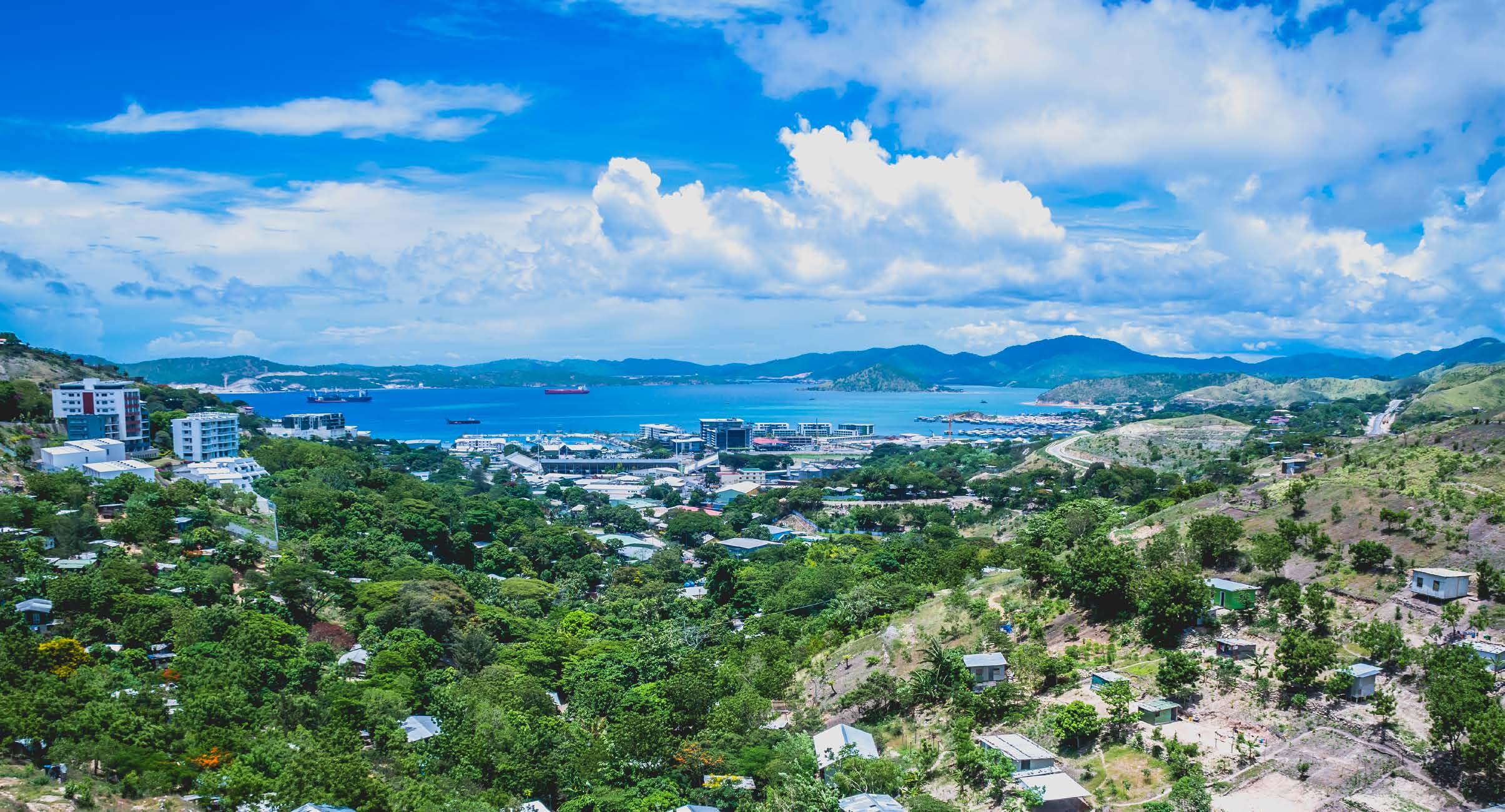
In the Highlands, the mountainous terrain is so dense and remote that the different groups who migrated to the region developed their own languages and tribal culture to reflect their surrounds.
Lying just south of the equator, the climate in PNG is tropical with the wet season occurring December to March and the dry season May to October. The seasons are not as pronounced as in Asia so, while the humidity can be high at times, the temperatures rarely get too hot. There are, however, exceptions to the region’s seasonal rules with Alotau and Lae experiencing the wet season when other regions are dry. Additionally, Tabubil, nestled at the base of the Star Mountains in the Western Province, is known as the “umbrella town” because of its persistent rainfall year round. To further prove PNG’s diverse nature, the dry season can be unpredictable across the mainland, while the island provinces have a steadier climate with milder temperatures and infrequent rainfall.
PNG has a small population of approximately 8 million people, yet no less than 820 different languages are spoken throughout the region. It comes as no surprise then that a quarter of the world’s languages herald from PNG. English, Pidgin and Hiri Motu are the official languages of the region. PNG’s remoteness has preserved a traditional lifestyle, with many Papua New Guineans still residing in small villages and surviving on farming.
A number of fascinating cultures can still be found in PNG from the famous Huli Wigmen in the Highlands to the enigmatic tribes on the Trobriand Islands. As a result, PNG has sprouted a number of annual festivals that celebrate the customs and costumes of the beguiling locals.
4
WESTERN PROVINCE SANDAUN PROVINCE EAST SEPIK PROVINCE MANUS PROVINCE MADANG PROVINCE WEST NEW BRITAIN PROVINCE EAST NEW BRITAIN PROVINCE MILNE BAY PROVINCE CENTRAL PROVINCE GULF PROVINCE MOROBE PROVINCE ORO PROVINCE EASTERN HIGHLANDS PROVINCE WESTERN HIGHLANDS PROVINCE CHIMBU PROVINCE JIWAKA PROVINCE HELA PROVINCE SOUTHERN HIGHLANDS PROVINCE ENGA PROVINCE NEW IRELAND PROVINCE AUTONOMOUS REGION OF BOUGAINVILLE Australia Badu I. Moa I. Boigu I. Saibai I. Daru I. Kiwai I. Mibu I. Kairiru I. Mushu I. Vokeo I. Schouten Islands Admiralty Islands Noru I. Manus I. Ponam I. Bipi I. Maron I. Luf I. Hermit Islands Heina Islands Manam I. Long Island Kar Kar Island Bagabag I. Wabuda I. Umuda I. Purutu I. Uapumba I. Naviu I. Morigio I. Lasanga I. Walaiuele I. Yule I. Bona Bona I. Basilaki I. Samurai I. Misima I. d’ Entrecasteaux Louisade Archipelago Islands Amphlett Witu Islands NEW BRITAIN Group Trobriand Islands Goodenough I. Normanby I. Woodlark I. Fergusson I. Sakar I. Umboi I. Tolokiwa I. Unea I. Lolobau I. Duke of York I. Pinipel I. Ambitle I. Babase I. Simberi I. Tatau I. Tabar I. Malendok I. Lihir I. BOUGAINVILLE ISLAND NEW IRELAND New Hanover Han I. Taiof I. BUKA ISLAND Petats I. Nissan I. Thursday Island Cap Wom Nat Park Ramu Nat Park TORRES STRAIT GULF OF PAPUA GREAT NORTH EAST CHANNEL GREAT BARRIER REEF FLY HEGIGIO KIKORI PURARI MARKHAM RIVER RIVER RIVER RIVER RIVER MUSA RIVER MONI SEPIK SEPIK RAMU RIVER RIVER RIVER RIVER SOLOMON SEA BISMARCK SEA PACIFIC OCEAN LAKE MURRAY LAKE KUTUBU & WASI FALLS CHAMBRI LAKES STEPHEN STR ISUMRUD STR ASTROLABE BAY DECEPTION BAY MARKHAM BAY HUON GULF HERCULES BAY HOLNICOTE BAY REDSCAR BAY HOOD BAY DYKE ACKLAND BAY COLLINGWOOD BAY TABLE BAY GOODENOUGH BAY GOSCHEN STRAIT ORANGERIE BAY MILNE BAY VITIAZ STRAIT BROKEN WATER BAY DAMPIER STR RIEBECK BAY STETIN BAY KIMBE BAY ST GEORGE’S CHANNEL OPEN BAY WIDE BAY JACQUINOT BAY DOLOMAKAS BAY YSABEL CHANNEL BISMARCK ARCHIPELAGO CHANNEL GAZELLE TULUN LAGOON EMPRESS AUGUSTA BAY REINIRIVER WARD HUNT STRAIT BOUGAINVILLE STRAIT CAPE GIRGIR CAPE GOURDON CAPE WARD HUNT CAPE YORK EAGLE POINT CAPE NELSON HUON PENINSULA SOUTHWEST POINT WILLIAMEZ PENINSULA CAPE LAMBERT NORTH CAPE CAPE ST GEORGE CAPE HANPAN MOTUPENA POINT MOILA POINT kcarTadokoK Weam Morehead Goe Arufi Buk Sibidiri Oriomo Balimo Pangoa Ungerum Telefomin Tabubil Kelabo Yellow River Mission May River Green River Yemnu Dreikikir Maprik Pagwi Ambunti Drome Aitape Suain Kaup Timbunke Awar Bogia Bunabun Annaberg Kwanga Aiome Usino Ming Ming Wadau Kinim Simbai Dusin Porgera Paio Pangia Poroma Kaupena Karengari Margarima Henganofi Kainantu Yonki Agota Waisa Okapa To’Okona Minj Erave Ramu Kabwum Wantoat Singorokai Wasu Koumaio Wabuda Bamio Bora Goari Terapo Ihu Mirapo Antelope Elk Bukaua Bonga Menyamya Wau Bulolo Guan Woitape Manau Morobe Eroro Sogeri Hisiu Lea Lea Pongani Gobe Sariri Safia Gabagaba Aroma Amau Magarida Kewasasap Siri Siri Mukawa Mamai Topura Savaia Siasiada Nomane Mendi Kiunga Sehulea Waibula Mapamoiwa Esa’ala Wadelei Salamo Kalo Kalo Bolubolu Kaurai Guasopa Bwadela Kaibola Gasmata Akinum Karaiai Eseil Sauren Sag Sag Siassi Lab Lab Talasea Woganakai Lapau Pomio Uvol Malmal Tarobi Galilo Ubai Hoskins Merai Marupa Sampun Ora Open Bay Takis Malasait Rasirik Sopau Manga Taron Bakop Kait Karia Fangalawa Kama Konos Karu Londolovit Umbukul Taskul Wakunai Tinputz Arawa Buin Malala Madang Kerema Daru Tari Lae Goroka Mount Hagen Wabag Kimbe Buka Popondetta Tufi Alotau Rabaul Kokopo Wewak Kokoda Lorengau Vanimo Port Moresby East Cape Kavieng Kundiawa N 0 SCALE 200 km PAPUA NEW GUINEA 5 DESTINATION PAPUA NEW GUINEA
FESTIVALS
Culture comes alive in a kaleidoscope of colour at the various shows that occur across the region annually.
MADANG FESTIVAL
Held over the King’s Birthday weekend in June each year, the Madang Festival celebrates the region’s rich culture with a colourful parade, canoe racing, sporting activities and stalls.

NATIONAL MASK FESTIVAL & WARWAGIRA
In July, the National Mask Festival in Rabaul brings the variety of the Papua New Guinean masks to one single celebration. The festival usually runs for four days and provides visitors with a fantastic array of performances including the Baining fire dancing, drumming, singing and fire-eating.

MONA FESTIVAL
In remembrance of the traditional warriors, Mona Festival named after ‘Monas’ - a word traditionally meaning canoe, is the largest cultural event in Bougainville. Staged in Buka and launched only in 2009. The colourful festival comes alive in July and is said to celebrate the cultural diversity and autonomy that inspires peace and reconciliation in Bougainville.

HAGEN SHOW
Highlighting the rich culture of the Highlands region in a wonderful display of sing-sings. The Hagen Show - launched in 1961, attracts around 50,000 visitors each year and is one of PNG’s oldest shows. Held annually in August, the show provides an insight into the fascinating customs of the local tribes.
Hagen show
6
Annual mask festival in Kokopo (Tokua)

SEPIK RIVER CROCODILE & ARTS FESTIVAL
The Sepik River is impressive not only because of its raw beauty and size, but it’s wide variety of wildlife and culture. Across the two provinces (Sandaun and East Sepik) there’s over 200 languages spoken. For the communities along the Sepik River, the crocodile represents strength, power and manhood. Held in august, the festival is a three day event in Ambunti that’s emblematic of the significance the crocodile has on the tribes along the Sepik River.
ENGA CULTURAL SHOW
One common dialect dominates the Enga Province, which makes it a particular drawcard for those visiting PNG. The Enga Festival is a time when locals can showcase their amazing culture. Held in August each year, enjoy the Engans’ famous sand painting and unique Sili Muli dancers.


DWU CULTURAL DAY
The Divine Word University Cultural Day, held in August, is an annual event that sees students come together to perform and celebrate their cultural heritage. For more information, call Divine Word University on +675 422 2937.
GOROKA SHOW
An annual September event. The Goroka Show sees over a hundred tribes travel from far and wide for the spectacular event. Drumming is an integral part of PNG’s culture and is the oldest form of music in the world. The sound of the kundu drum is powerful and brings together the different tribes with a bond over beautiful sounds to celebrate the fascinating heritages.
HIRI MOALE SHOW
On Independence Day in September, the Hiri Moale Show has become a premier cultural event in Port Moresby. Like everything in PNG, the show illustrates rich and symbolic history that reflects on age-old stories and customs. During the show, Ela Beach comes to life with stilt houses, colourful canoes and hundreds of people singing, dancing and celebrating tradition.
FRANGIPANI FESTIVAL
Occurring in Rabaul each September, the Frangipani Festival celebrates Independence Day. See the famous Baining Fire Dance, sing-sings, a float parade and more.
MOROBE CULTURAL SHOW
The Morobe Cultural Show in Lae is probably the most famous cultural show in PNG. It is held in October each year and provides visitors with agricultural information as well as showcases the largest group of sing-sings in PNG.
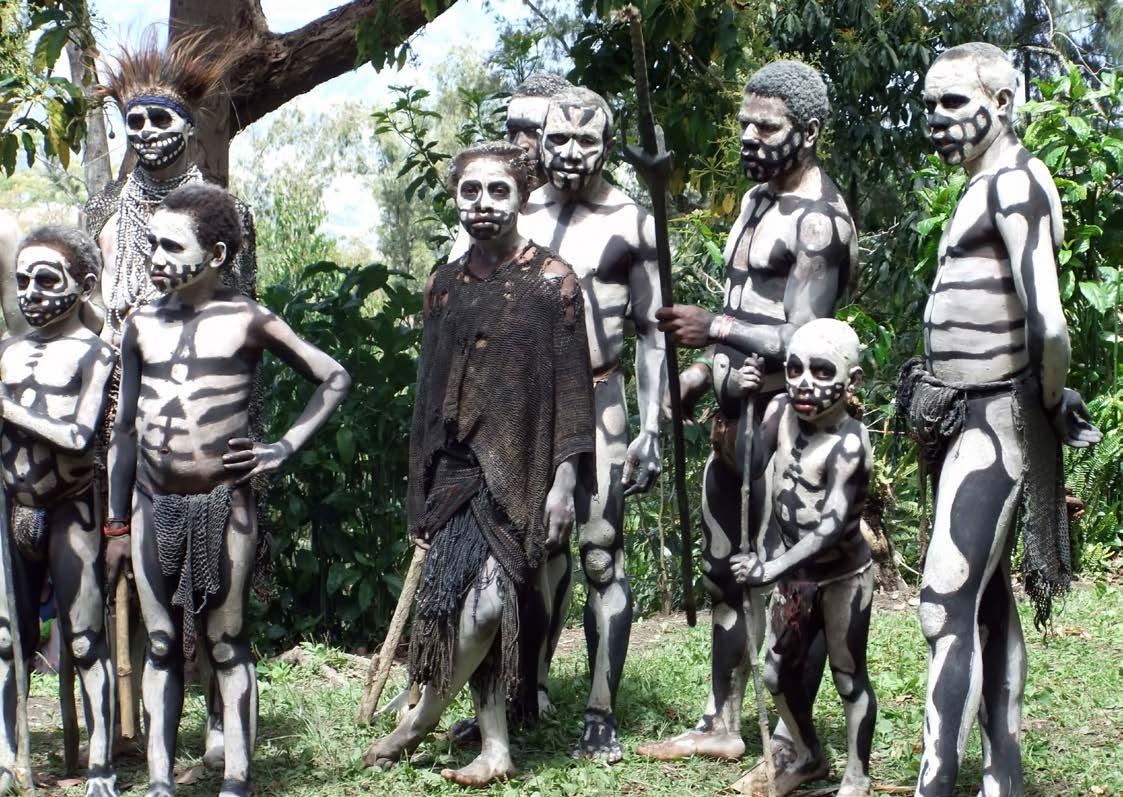

KENU & KUNDU FESTIVAL
With its rich connection to the water, the people of Milne Bay celebrate a canoe festival in November each year. More than 600 tribes from the surrounding islands participate in the festival and race to glory in their war canoes. The festival boasts plenty of other action-packed entertainment.
Events and dates do change from time to time. For up to date information on PNG cultural festivals, visit www.papuanewguinea.travel
Native Dragon Dance Ceremony, Kopar Village, Sepik River
Asaro Mudman tribe man in Mount Hagen festival
Skeleton dance at Goroka Tribal Festival
8
Enga cultural show in Wabag






DESTINATION PAPUA NEW GUINEA 9
7th Gulf Mask Festival, Toare Village, Gulf Province
talking tok PISIN
In no other way does Papua New Guinea demonstrate its diversity better than with its languages. Boasting 820 languages, Tok Pisin (Pidgin), Hiri Motu and English are the three most common languages, with English spoken in education, business and government circles.
Known as pidgin in English, Tok Pisin is a creole language which derives its vocabulary from a blend of languages. English forms the basis of Tok Pisin but it is also influenced by German, Portuguese, Malay, Chinese and native languages. Tok Pisin translates to “talk pidgin” and is spoken by approximately two million people in PNG today.
It’s believed that the whalers who arrived in the region around the 1850s spoke a rudimentary pidgin, a mix of English and native tongue, to trade with the locals. When Papua New Guineans were recruited to German owned plantations in Samoa in the 1870s, they spoke pidgin to communicate with the Malaysian and Chinese labourers. On arriving back home to PNG after their work stints, many labourers continued to speak it.
The German’s annexing the north-eastern part of PNG, known then as German New Guinea, was influential in isolating the language and allowing it to cultivate unique mechanisms. At the turn of the century, Tok Pisin became a means for the locals to attain European comforts such as cigarettes from settlers. During the Australian administration of PNG, Tok Pisin became more widely spoken and eventually forged itself into the common vernacular.
All of this has culminated in a nation of people who speak a number of languages including many traditional Papua New Guinean dialects: Ples Tok (meaning ‘place talk’ which is the language used in their own place), Tok Pisin, English and other local languages that they learn by virtue of moving to other villages during the course of marriage and for other migratory needs.
Many Tok Pisin words are easily translated if you speak English, but it’s not all based on such simple substitution. The language does have a very clear structure and form. Like all languages, there are rules such as using pla in front of most nouns and after adjectives. For example to say ‘the big house’, you would say big pla haus. Nonetheless, there are exceptions; some adverbs are formed by using two words such as the word for ‘little’ which is lik lik. With these types of words you do not use the pla. To say ‘little bag’ you just say lik lik bilum. A bilum is a traditional PNG bag that is made from a woven twine taken from the pandanus tree.
To make your stay in PNG more rewarding, learn some basic phrases so you can converse with the locals.
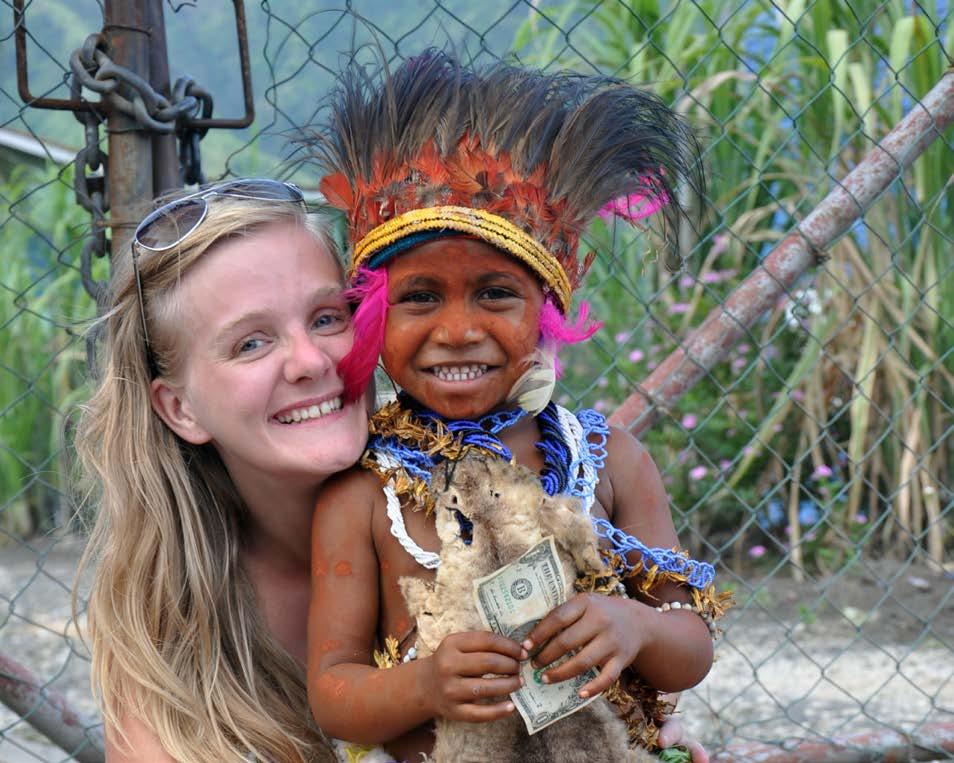
Welcome – Welkam
Hello – Alo
Hello (informal) – Hai
Good Afternoon - Apinun
Goodbye – Lukim yu
Goodbye (informal) – Kach
Goodbye (for a little while) – Lukim yu sampla taim
How are you? – Yu orait?
I’m fine or Fine, thank you – Mi orait tasol
Yes – Yesa
No – Nogat
Sorry – Sori tru
Excuse Me – Skius
Please – Plis
Thank you – Tenkyu
No worries or You’re Welcome – Stret
Have a nice day – Yu gat gutpela de
Do you speak English? – Yu save long tok Inglis?
What is your name? – Wanem nem blo yu?
My name is … – Nem blong mi em
What is this? – Disla wanem?
How much is this? – Dispela em hamas?
Where is the toilet? – Smolhaus I stap we?
Is it safe? – Em sef ya?
Can I eat this? – Ken kaikai disla ya?
10
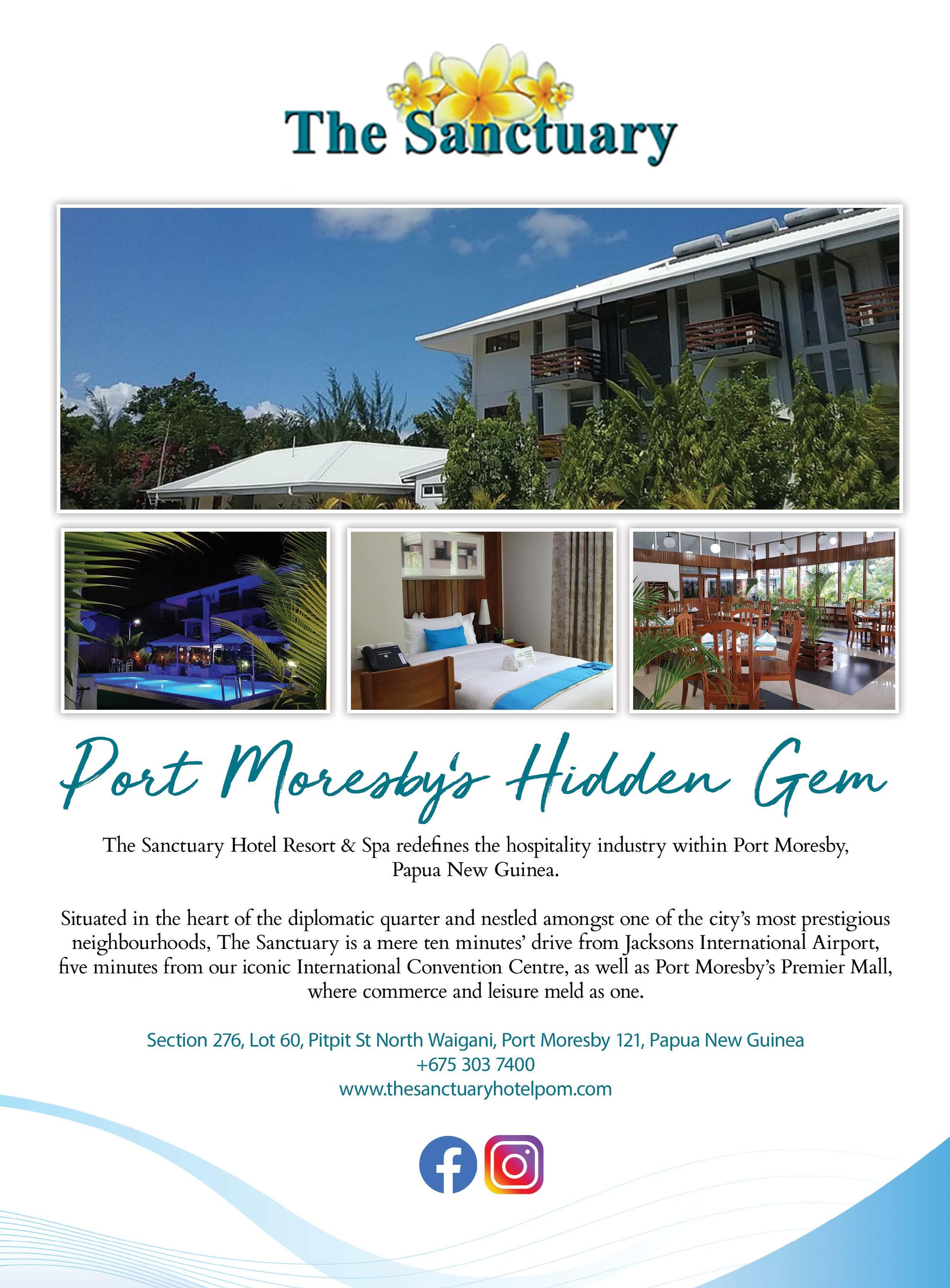




12

Scuba Diving in Papua New Guinea
Papua New Guinea is located at the epicentre of the huge area of South-East Asia that oceanographers refer to as the Coral Triangle and is generally considered as the richest area of marine biodiversity in the world!
Scientific studies have quantified that biodiversity at more than 600 species of coral, together with some 3000 species of reef fish which, to put in perspective, is roughly three times the species count of the Red Sea.

The majority of those species can be found in the waters of PNG and tend to be concentrated in key locations where, over the last 25 years or so, adventurous and enterprising pioneers have established scuba diving operations.
Most of those operations are resort-based, while others are liveaboard-based, but all provide access to what many regard as some of the very best tropical diving in the world!
Tufi 14
A BIG PLACE…
Understanding scuba diving in Papua New Guinea requires a brief lesson in the country’s geography - starting with the huge island of New Guinea, the second largest in the world, the eastern half of which is the “mainland” of PNG while the western half is the Indonesian province of West Papua. Then, over in the east, is the long, musket-shaped island of New Ireland and in between is the large island of New Britain. Together, those three are the “main islands” of Papua New Guinea - with the other 600+ smaller islands that make up the country arrayed around them.
The lifeforce of the Coral Triangle’s biodiversity is a complex network of nutrient-rich regional and equatorial currents. Unique to the six countries that form the Coral Triangle, only Papua New Guinea is touched by all those currents making it a true biodiversity hotspot!

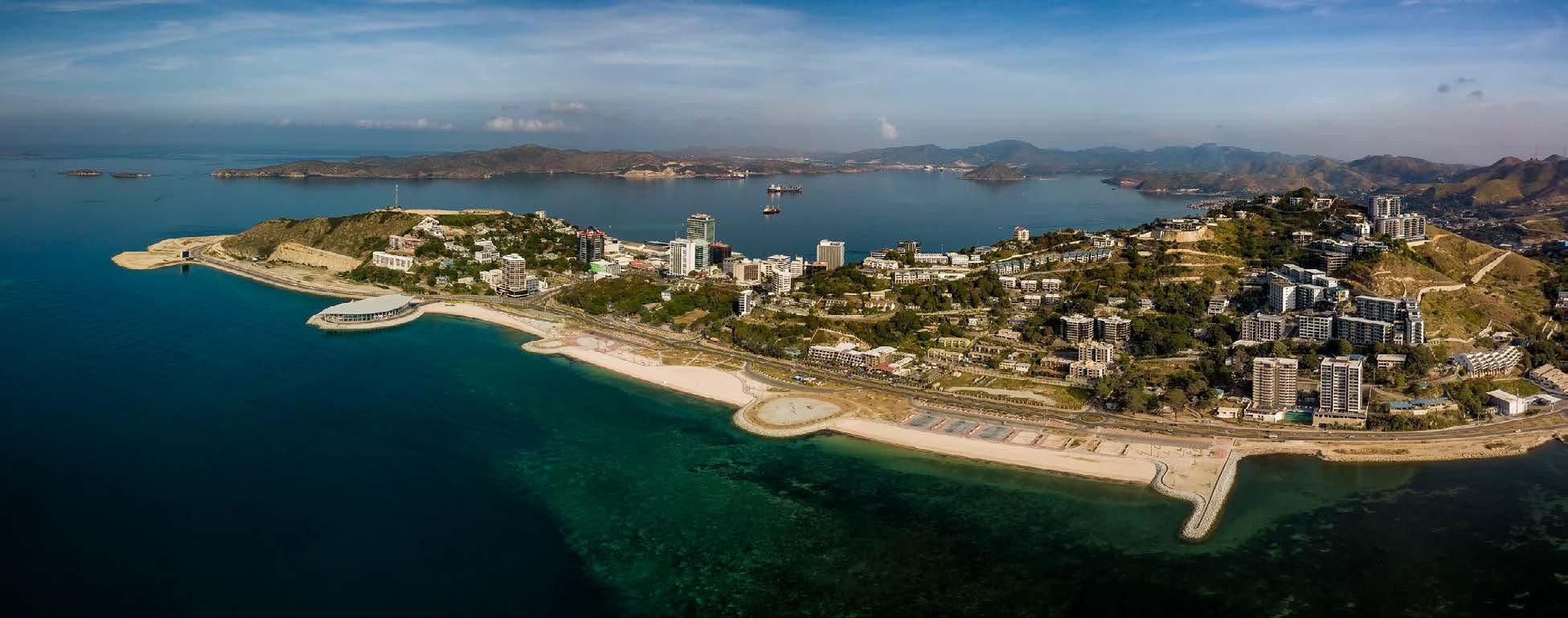

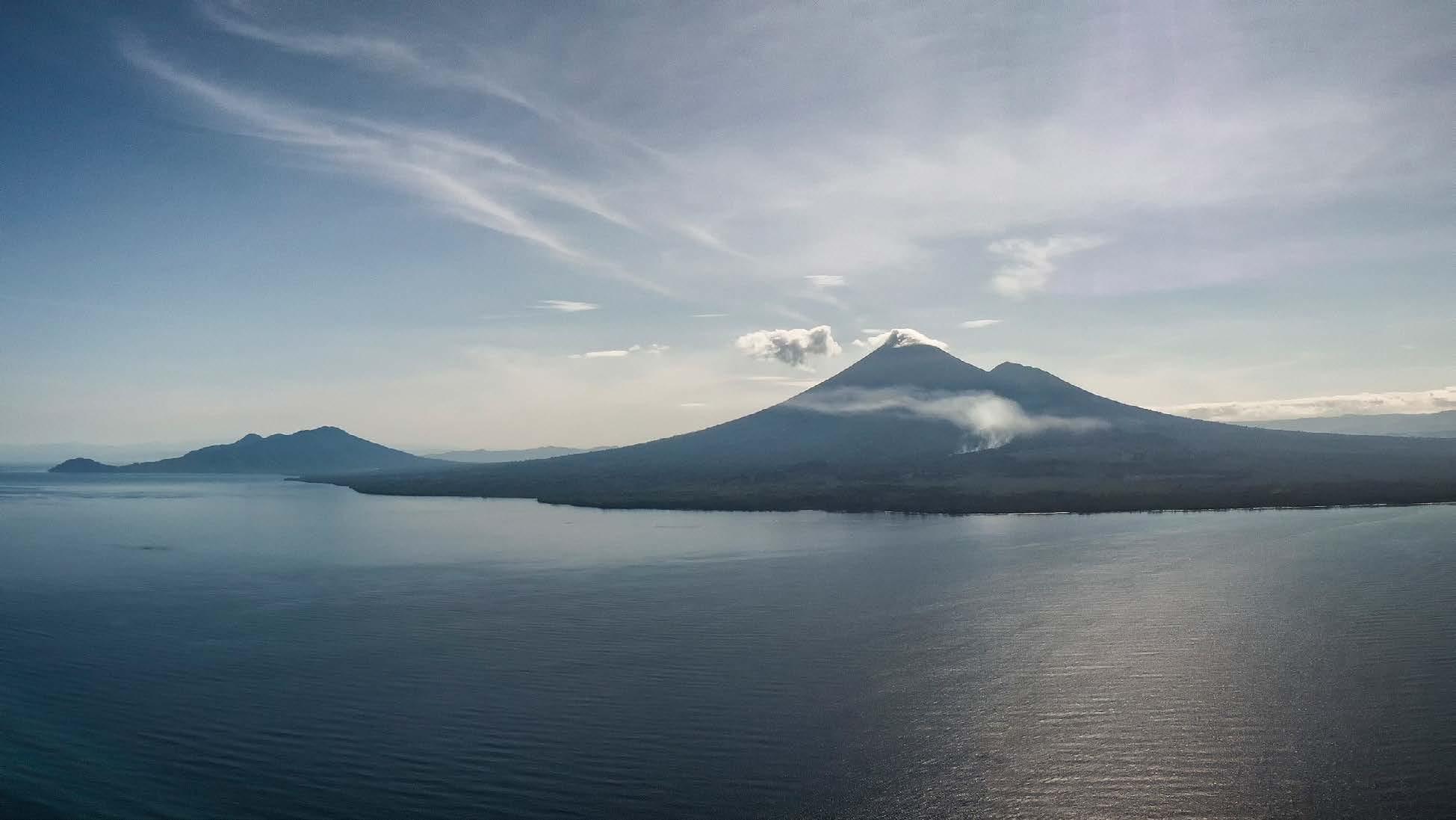 Port Moresby
Port Moresby
15 DESTINATION PAPUA NEW GUINEA
Lolobau Island Volcanoes
Lissenung Island, New Ireland
Garove Island
PAPUA NEW GUINEA
On the south-eastern tip of the island of New Guinea is Milne Bay and a large number of islands that make up the province of the same name.
Milne Bay is what first put Papua New Guinea on the “must-do” list of travelling scuba divers and underwater photographers – largely because of the pioneering exploration carried out by the late Bob Halstead and his then-wife Dinah in the locally constructed liveaboard the MV Telita.
Telita, named after their daughter, was the first liveaboard in PNG and one of the first globally. In it, Bob and Dinah explored the length and breadth of Milne Bay province, finding many of the wonderful sites that were made famous by Bob’s photographs and articles.
Other adventurers followed and today Milne Bay can be dived both from land and by liveaboard dive boat.
“Nestled in dense rainforest” is somewhat of a cliché these days, but Tawali Dive Resort truly is – located as it is on a beautiful, remote headland on the north coast of Milne Bay, overlooking the Solomon Sea and within 30 minutes of many of the best coastal reefs and seamounts in the province.
2-3 first class dives per day are possible and you can still be back at the resort in time for a sundowner on the large terrace and dinner in the excellent restaurant.
If you want to explore the remoter parts of Milne Bay province then the liveaboard option is the way to go and there are two choices – MV Chertan and MV Oceania.
Owned and skippered by Rob van der Loos, Chertan is based year-round in Milne Bay, and with over 30 years’ experience of the area it is not hyperbole to state that nobody knows the diving and sites better than Rob does.
Rob enjoys an excellent reputation among underwater photographers for getting them to sites that host some of the weirdest and wonderful small creatures the oceans have to offer and a trip on Chertan is truly an immersive experience!
Skippered by Dan Johnson, another long-time PNG resident and explorer, MV Oceania is normally based out of Kimbe Bay in New Britain. But Dan wants to take adventurous divers and underwater photographers to the very best sites in Papua New Guinea.
So, every January Dan relocates Oceania to Milne Bay for a couple of months and covers both the northern and southern areas of Milne Bay, getting his guests to iconic dive sites like the manta ray cleaning station at Gona Bara Bara island, Samarai Jetty and Deacon’s Reef.
While Milne Bay is the jewel in the crown of New Guinea island there are two other real gems to consider – Tufi and Port Moresby!
Tufi is one of the most scenic locations in PNG, located as it is overlooking the beautiful tropical fjords of Cape Nelson.
Tufi Dive Resort sits picture perfect on the ridge above the main fjord and down below is the main jetty where the dive boats leave every morning for the incredible offshore reefs that are really only dived by visitors to the resort.
Think remote reefs and isolated seamounts, fed by the rich coastal currents that act as beacons to open water pelagics of the Solomon Sea!
And… if you prefer the smaller critters of the ocean, you can literally spend hours and hours exploring the main fjords with its jetties and accumulated flotsam and jetsam that critters just love to colonise.
Last and by no means least – do not overlook Port Moresby as there is some really excellent diving out on the offshore sunken reefs with the newly refurbished Loloata Resort and ProDive PNG diving the numerous reefs and wrecks regularly.


16
NEW IRELAND
Located along the edge of the Bismarck Archipelago, the province of New Ireland forms the eastern flank of PNG and is quite remote from the main island of New Guinea, with its own distinct and interesting traditional cultures.
The province consists of the large, musket-shaped main island of New Ireland, together with numerous other smaller islands, the largest of which is New Hanover.
Diving in New Ireland is centred around Kavieng, the main town and provincial capital which offers a broad selection of excellent diving – with shipwrecks, WWII aircraft wrecks, dramatic walls, dynamic channels, bustling reefs and schooling pelagics.
New Hanover also has some excellent diving with a superb mixture of rarely dived reefs and WWII Japanese shipwrecks, including a completely intact midget submarine!

Both Kavieng and New Hanover require excellent local knowledge to get the timing right for the best sites due to the strong equatorial currents that sweep through the area, but get them right and you will understand why the area has such a dedicated following.
There are two options to dive the Kavieng area – Lissenung Island Resort and Scuba Ventures.
If you have ever dreamed of staying on a small private island, then Lissenung is for you… It is run by husband-and-wife team Dietmar and Ange Amon, together with their team of locals recruited from the nearby islands and trained by Ange, Lissenung is perfectly located to get to the best sites on both the Pacific Ocean side of Kavieng and the Bismarck Sea side. Plus, they also run multi-day expeditions to dive the wrecks and reefs of New Hanover as well as a sea turtle conservation program.

DESTINATION PAPUA NEW GUINEA 17
NEW BRITAIN

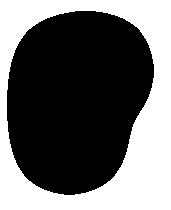










The large island of New Britain is second only in size to New Guinea and is an intriguing location with some very defining features – a huge mountain range that separates the north coast from the south and an array of volcanoes.

So high are those mountains, they create opposite weather systems so that when it’s the wet season in the north, it’s dry in the south and vice-versa. But when it’s wet in the south, it’s really wet, and the south coast is making it one of the wettest places in the world!
The main diving location in New Britain is Kimbe Bay on the mid-north coast. Kimbe is to New Britain what Milne Bay is to New Guinea island – an incredible location with tremendous diving on the seamounts and reef systems of the bay.

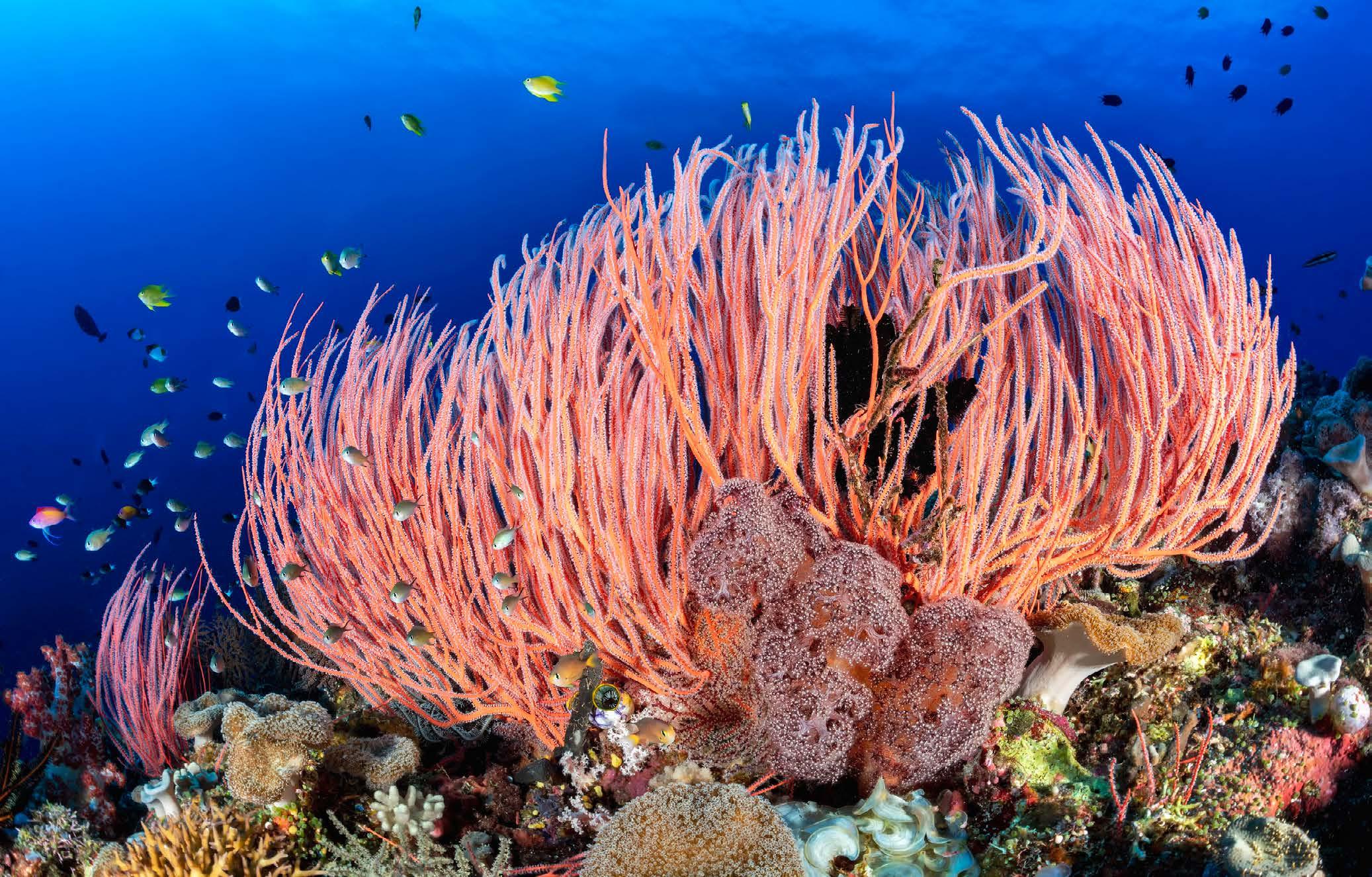
It is also the base for the liveaboards that dive the Fathers Reefs in the remote eastern end of the bay and the Witu Islands in the Bismarck Sea.
Both liveaboards, MV Oceania and MV Febrina are part of the family run Walindi Plantation Resort which was founded by the late Max Benjamin and his wife Cecilie in 1983 and is now run by their son Cheyne and his wife Ema.

While on the north-east tip of New Britain is Rabaul, famed for its massive caldera and 65 WWII Japanese wrecks now largely buried under volcanic ash after the 1994 eruptions the Tavuvur and Vulcan volcanoes.
While most of those wrecks are no longer dive-able, a couple are and there are several other really great sites in the Rabaul area. To dive Rabaul, Rabaul Dive Adventures can take you there.
18
IN SUMMARY…
Papua New Guinea literally has something for all divers and underwater photographers – incredible reefs, stunning seamounts, WWII aircraft wrecks, pelagics and wonderful macro sites.

For Australians it’s an ideal location as you can leave from the east coast in the morning, transit through Port Moresby and be at your resort or liveaboard that same evening!
Article & Images
By Don Silcock
Don has been visiting PNG at least once a year for over 20 years and has dived all the main locations many times using that experience and his images to create the Complete Guide to Diving Papua New Guinea
His website www.indopacificimages.com has extensive location guides, articles and images on some of the best diving locations in the Indo-Pacific region and “big animal” experiences globally.
DESTINATION PAPUA NEW GUINEA 19
Kavieng, New Ireland
10 ADVENTUROUS THINGS TO DO IN PAPUA NEW GUINEA
 by Jackson Groves
by Jackson Groves
Papua New Guinea is commonly referred to as the ‘final frontier’ because so much of the country remains untouched and full of natural beauty. With tribal culture and traditions of generations still present throughout the island nation, these are just a few of the reasons so many travellers are drawn to Papua New Guinea.
Papua New Guinea has so much to offer that so few know about. This is what made it such a privilege to explore this island nation. With so many amazing places to see, here are some of the best things to do in Papua New Guinea which I experienced on my three-week trip throughout the country.
20
TREK THE KOKODA TRACK
The most popular tourist attraction in Papua New Guinea is most definitely the Kokoda Track. For a once in a lifetime experience that will push you to your limits, I can’t recommend the Kokoda Track enough.

The Kokoda Track is known as one of the toughest multiday treks in the world. The track has an immense historical significance as it was the epicentre of the Kokoda Battle between the Japanese and the Australian Forces in WWII from 1939-1945. The gruelling battle of war was played out in harsh tropical conditions along the muddy ridges of the Kokoda Track. Today, trekkers come from all over the world to push themselves physically and mentally to complete the onerous journey across the Kokoda Track while experiencing and reflecting on the four pillars of Kokoda; mateship, endurance, sacrifice and courage.
Beginning at Owers’ Corner in Central Province, 50-kilometers east of the capital in Port Moresby, the Kokoda Track is a single-file trail which runs through the Owen Stanley Range in Papua New Guinea and finishes in the village of Kokoda, in the Oro Province.
The track makes up a total distance of 96-kilometers, which sounds like a long way but when you break it up over 8 days it becomes a manageable 12-kilometers a day. It is important to note however that it is very slow going due to the muddy and uneven terrain. 12-kilometers on flat terrain walking around the local park may take you 2-3 hours but, on the Kokoda Track, you can expect to go much slower, so 5-8 hours of hiking a day is about the norm.
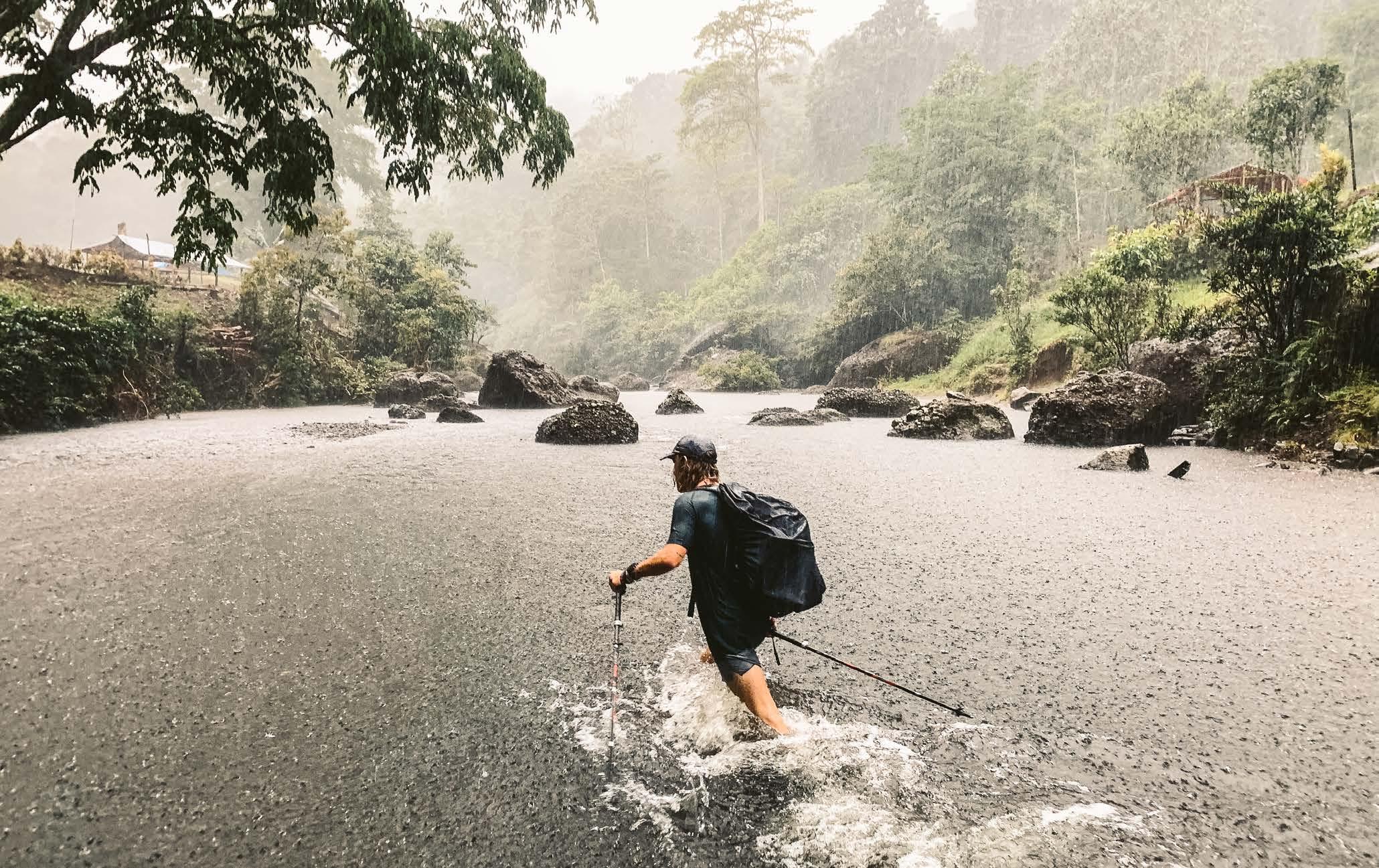
DESTINATION PAPUA NEW GUINEA 21
1.
2. TREK UP TO THE HIGHEST POINT IN PAPUA NEW GUINEA & OCEANIA: MOUNT WILHELM

The tallest peak in Oceania at 4,509m, climbing Mount Wilhelm is one of the toughest challenges in Papua New Guinea and not for the faint-hearted. The journey to base camp and then to the summit requires planning, determination and hopefully the weather is on your side!
Part of the Bismarck Range, the peak of Mount Wilhelm is the exact point where three different provinces meet. Generally, most people take 2-3 days to complete the trek. Take the time to acclimatise to the altitude rather than rush.
The total distance of the hike is 11.7km one-way from Betty’s Lodge to Base Camp (where most trekkers stay) to Summit, so a total round-trip distance of 23.4 kilometres is what you’re up against.
The trail is slow going due to the slippery, uneven terrain and the trail consists of a dirt path, muddy terrain, and moderate bouldering. There are no technical sections that require rock-climbing experience or ropes/equipment.
This was definitely one of the toughest experiences I’ve ever had as we battled the cold and altitude to reach the summit and watch the sunrise! Mount Wilhelm makes it to the top of the list as one of the most difficult places to visit in Papua New Guinea.
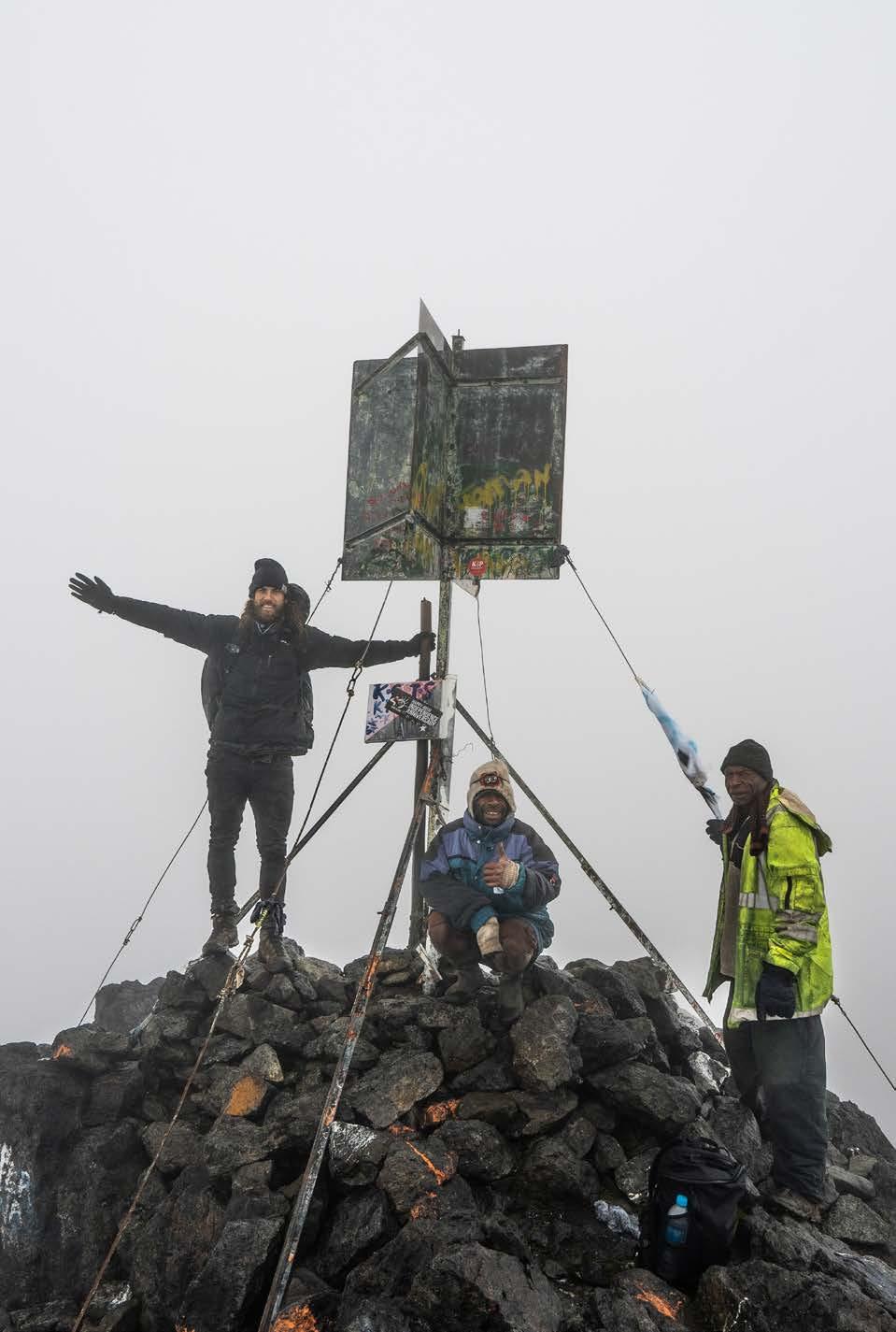
22
ISLAND HOPPING IN MADANG
Madang is one of the most pristine coastal regions in Papua New Guinea. Here you will find excellent diving, WWII plane and shipwrecks, as well as land attractions and villages in the jungle to explore. There are hundreds of islands off the coast of Madang and with few other boats in the area, at times it feels like you are on your own private island where you can get back to nature and enjoy the peaceful calls of the birds. There were many highlights while island hopping, but the favourite for me was Pig Island. Covered in palm trees and surrounded by incredible turquoise waters, the jungle seemed to overflow onto the beach and into the water. It was beautifully wild.
SCUBA-DIVING IN MADANG
On one of our days in Madang, we headed out from Madang Resort to discover several wrecks that are remnants of the battles that took place in WWII.

The underwater wrecks are one of the best things to see in Papua New Guinea. It was an incredible experience to witness history but also see how nature slowly takes over with fish and coral covering the wrecks. We dove down to the Henry Lieth shipwreck and the B-25 bomber plane wreck, great spots to dive with hundreds of species calling the wrecks home.

23 DESTINATION PAPUA NEW GUINEA
3.
4.
EXPERIENCE THE HAILIKU VILLAGE TOUR, CAVING AND CLIFF JUMP


The Hailiku Village cliff jump in the jungle-cave called ‘Mali Cave’ was a bit of an accidental discovery. We were driving out along a bumpy road through the jungle, passing by lots of small villages and when we arrived some local village kids led us through the jungle towards the caves. When we arrived at the caves, we discovered that they were dark and full of water. We had a great time with the locals jumping off the cliff into the water.
The other adventure at Hailiku Village was a tour of the Itanub Cave. The Itanbu Cave is a deep cave with a small narrow entrance accessed by ladders made from bamboo and opens out into a huge room inside the cave. During the war, it is said that the Japanese used the caves in these regions to hide out.
5. 24
6. DISCOVER THE TALASEA PLANE WRECKS IN NEW BRITAIN
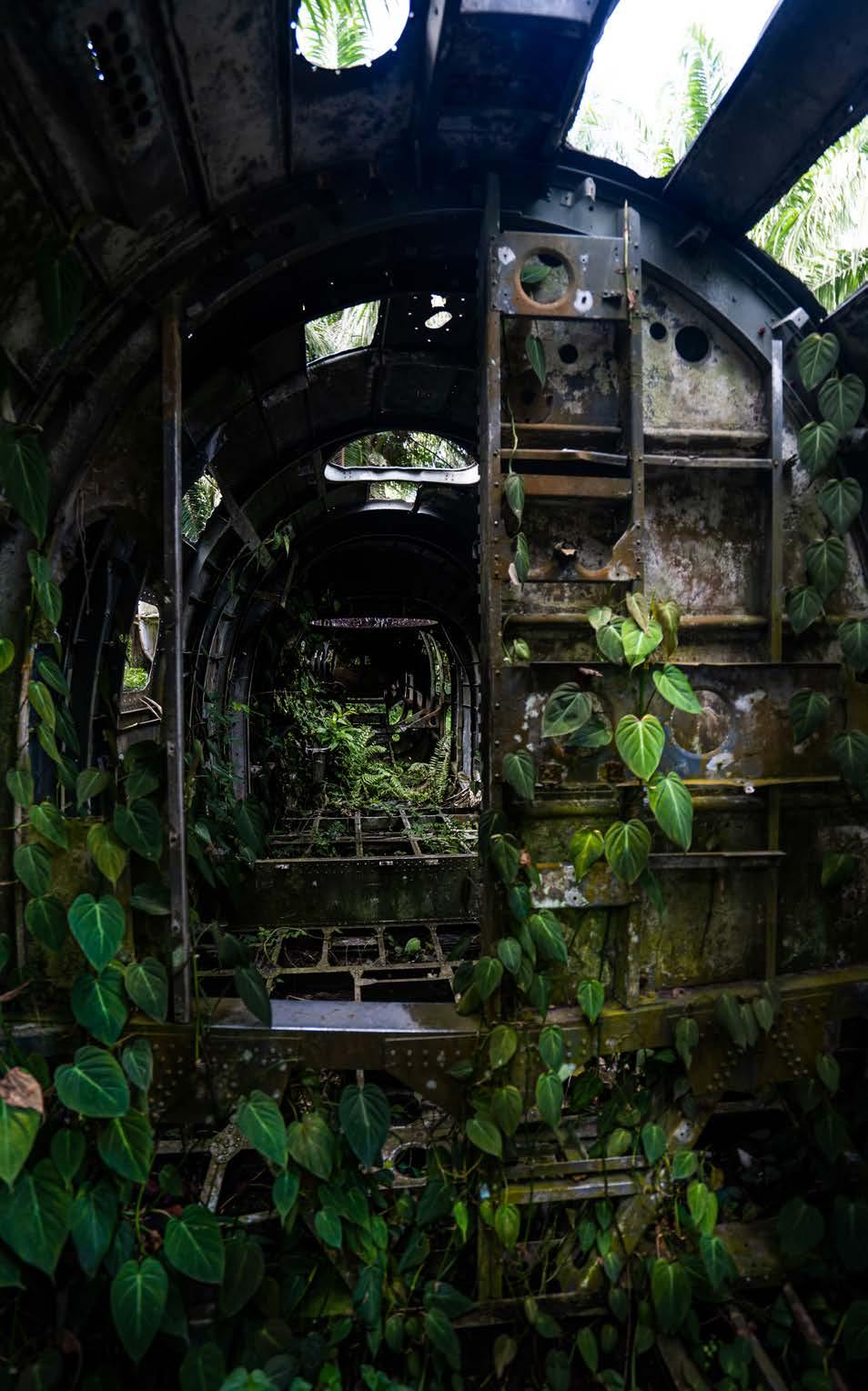
During World War II the South Pacific Sea was an explosive battleground between Japan and America and there are many planes and shipwrecks scattered throughout the island nation as a result. Many of the plane wrecks are underwater where you can explore them by scuba-diving, but we also visited several plane wrecks on land. For us, the most impressive was the Talasea Plane Wrecks.
The Talasea Plane Wrecks are found west of Kimbe Town in West New Britain, a 30-40 minute drive from Walindi Plantation Resort. The drive to the Talasea Plane Wrecks takes you along the coast from Walindi Plantation Resort and the road is only accessible by 4WD as it is very muddy and rocky. We were sideways at one point but our driver, a local legend named Joseph, was always in control!
The Talasea Plane Wrecks remain in the same position they crashed in. There was a town nearby, however this is no longer there as it has been replaced with a palm-oil plantation and the jungle is slowly overtaking the two bomber wrecks found at the site. The wrecks are on either side of the road and you can explore each with just a 20yard stroll from the road making it an easy activity after a day of island-hopping or scuba-diving.

DESTINATION PAPUA NEW GUINEA 25
HIKE TO THE TOP OF MOUNT GARBUNA VOLCANO


Mount Garbuna (sometimes named Gabuna) is only 20-km from Kimbe in New Britain. Sitting above the lush, forested mountain is one of the largest thermal fields in Papua New Guinea. Here we ventured on the three-hour, 8-kilometer trek through the forest with an abundance of birdlife and hundreds of different plant species. Once you emerge from the forest, the smell of sulphur fills the air as bubbling thermal pots send plumes of smoke flowing into the sky.
The hike begins from the small village at the foot of the mountain where a group of kids met us as we emerged from the Landcruiser. With water and a sandwich packed (and of course our camera gear), we headed off into the jungle. The trek is 8-kilometers up, with the return trip being the same way, so it is a total of 16-kilometers for the entire journey. The incline was about 850m in total (depending on which peaks you climb at the summit).
Once we reached the summit we made our way across the muddy plains, snaking in between the countless dead trees. We climbed our way up the ridge and made it to the base of the sulphur pit where we found a thermal field with bright yellow sulphur creating small chimneys where the plumes of smoke billowed out. With no other tourists or locals around, the entire scene felt very wild and like we were on another planet!
SOAK IN THE ENCHANTED HOT GARU RIVER
Hidden in the jungle, the Garu Hot River in New Britain is one of the most enchanting places I’ve ever visited. Warmed by the thermal fields of the volcano, the crystal-clear river steams at temperatures close to 40-degrees. It’s a perfect place to soak in the natural spa while taking in the lush jungle surroundings. This Papua New Guinean gem is truly magical and we were so glad we experienced it.
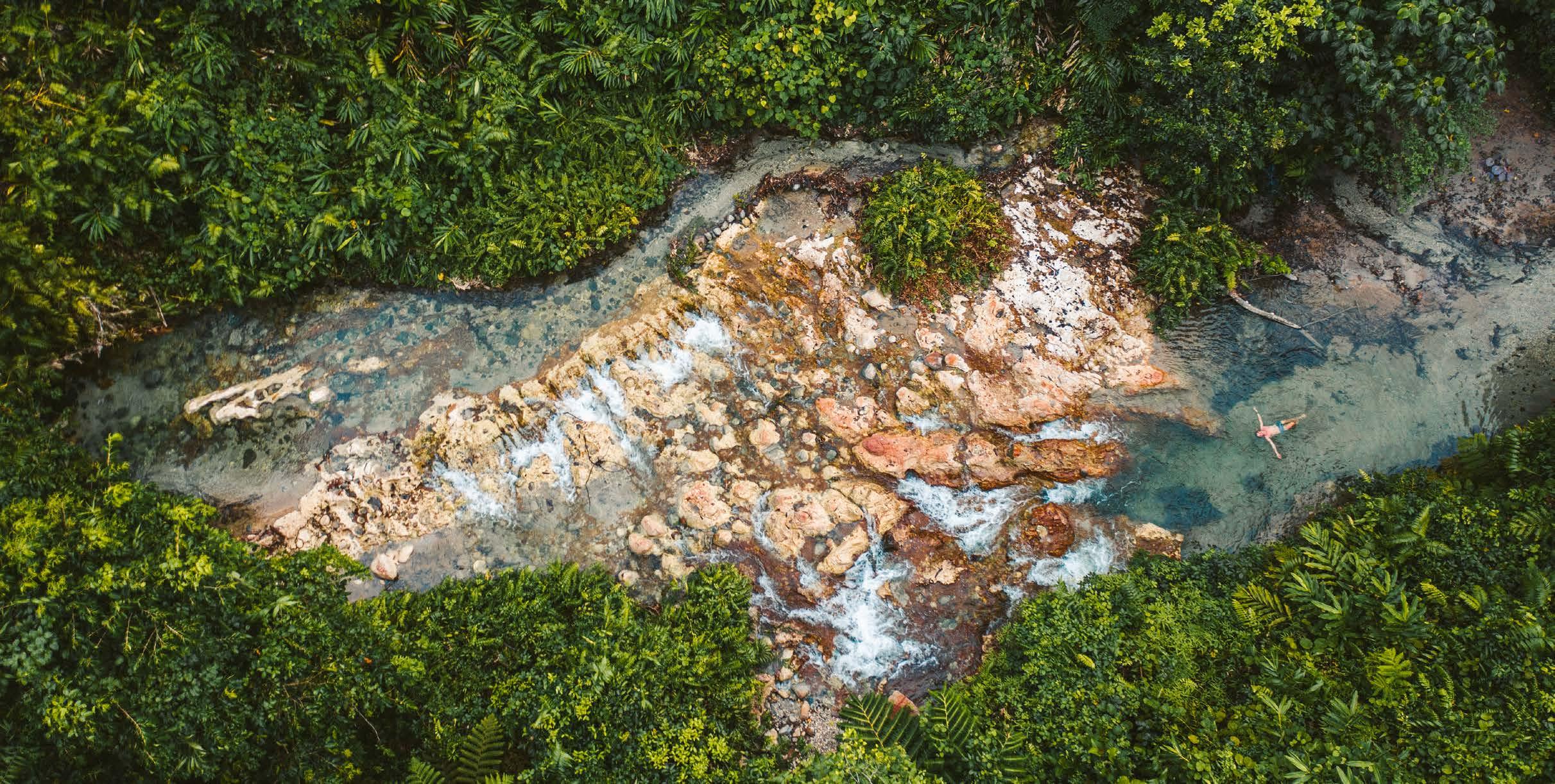 7.
7.
26
8.
ISLAND HOPPING IN KIMBE BAY
The island hopping in Kimbe Bay is like nowhere else. I say this because there is literally one tour operator and that’s it. There are no other boats, no other tourists, just you and nature.
We did a full day of island-hopping with Walindi Plantation Resort and it was incredible! We watched birds nesting on the islands as we sat on the boat, swam through underwater caves, snorkelled with colourful fish and coral.
I’ve been to a lot of beautiful tropical destinations and this region is one of the most pristine and stunning I’ve come across. Deep blues, tropical turquoise and a jungle full of green.
10. SNORKELLING AND SCUBA DIVING IN KIMBE BAY
Walindi Plantation Resort is the home base for all the diving in Kimbe Bay where you can go snorkelling, freediving, and scuba-diving at locations that are in pristine condition. The water clarity is unbelievable in some spots and we could see 40-ft deep with perfect vision just from the deck of the boat. Here you will find thousands of fish, corals, dolphins, sharks, and turtles that call the reefs home.
The sits can often be a little remote to reach but once you are there, settle in for some mind-blowing underwater action. Papua New Guinea is up there as one of the best diving destinations in the world.



9.
27 DESTINATION PAPUA NEW GUINEA
Article & Images by Jackson Groves #journeyera
TRIBAL CULTURES

THE ASARO MUDMEN
The Asaro Mudmen herald from the Eastern Highlands Province near Goroka. Their costume comprises of white body clay, long bamboo claws and a thick, ghostly mask made from dried clay. Today, competition is fierce among clans claiming their right to the origins of the Asaro Mudmen, which gives rise to some fascinating stories.

The most popular legend has it that the costume arose when the Asaro tribe ran into the Asaro River to escape the clutches of an enemy tribe. When they emerged on dusk and returned to their village covered with mud and looking inhuman, the enemy was struck with fear and fled. The incident gave rise to a new battle costume to frighten away adversaries. At the time, believing the mud from the river was poison, the Asaro tribe decided to make masks from homemade clay with threatening facial features and pig tusks. The sheer weight of the masks is terrifying enough, weighing in at around ten kilos.

Another tale exists where a man who attended a wedding without a costume placed a bilum over his head and covered himself in mud. Convinced he was a ghost, the guests ran from the scene, which gave the man a brilliant idea. He decided, along with his brother and friends, to wear the costume to scare off an enemy tribe. The strategy proved to be highly successful.
Today different groups of Asaro Mudmen perform across PNG at many of the festival events. The spectacular dance reimagines the battleground with Asaro Mudmen wielding spears and performing dance movements as though advancing on the enemy.
28
FEEL WELCOME T +675 309 3000 OR +675 7373 0400 W CROWNHOTEL.COM.PG
THE CHAMBRI
The Chambri tribe from the East Sepik Province still practice a totemic crocodile scarification ritual today. The tribe believes that in ancient times crocodiles rose up from the Sepik River and evolved into human form on land. The ritual commemorates the tribe’s fabled reptilian lineage.
The crocodile scarification ritual involves the subject being cut by a bamboo sliver on the chest, arms, back and buttocks in a unique pattern to resemble the teeth and scales of a crocodile. The procedure is excruciatingly painful but it is believed to be a right of passage and character building for males aged 11 to 30 years of age. Prior to the incisions, the back is hit repeatedly to inflame the skin to ensure fine scarring. After the incisions are made, the recipient lies in front of a fire where smoke and ash are blown into the incisions. Tree oil and clay are massaged into the wounds to prevent infection and also serve to keep the skin raised once the cuts heal.

When the ritual is complete, the youths are adorned with a traditional headdress and celebrations follow. A cultural tour showcasing this extraordinary custom is a must do when visiting the East Sepik.
THE HULI WIGMEN
The Huli Wigmen from Tari hail from the Hela Province. Like many tribes in PNG, their rituals, costume and dance pay homage to the environment, in particular the stunning birds of paradise. Unlike other cultural tribes, where patrilineal lines decree chiefdom, Huli leaders are chosen for their prowess in battle and conflict resolution, and wealth. The Huli people believe they descended from a man called Huli and, even though modern influences have begun to impact the culture, the tribe continues to live a traditional life for the most part.

Pigs are still a symbol of wealth and used as payment for bridal dowries and goods exchanged among tribes. Men and women do not typically live together. As a result, boys live with their mothers up until the age of eight and then reside with their fathers who teach them how to build and hunt. Young men are reared to be self-sufficient braving the surrounding jungle alone for extended periods as a rite of passage to manhood. At around fourteen, teenage boys attend wig school. Only virgins are accepted into wig school as their purity is said to be more amenable to magic. Each placement is the cost of one pig.
At wig school, a wig master oversees the grooming of hair to ensure that each boy creates a strong foundation for the Huli wig, a unique design of woven hair. The boys are inaugurated into the school with a ritual to cleanse the body and soul. They are then placed on a diet, which typically omits spicy foods and pork fat, to promote healthy hair growth. In addition, the wig master casts magic spells to spur growth along. For the next eighteen months, the boys sleep with a headrest to prevent their hair from being flattened. It’s then cut off and a wig specialist weaves it into the shape that forms the basic structure of the much lauded Huli Wigmen headdress. Finally, the wigs are adorned with feathers from the bird of paradise, yellow everlasting daisies and possum fur among other items.
It’s not uncommon for Huli Wigmen to grow multiple wigs over many years, as long as they’re crafted before marriage. Some are used in everyday life while others are saved for special ceremonial events. Ceremonial wigs typically have peaks at the side reminiscent of the bird of paradise’s wing span. When it’s cause for celebration, the Huli Wigmen dedicate much time and effort in preparing their spectacular costumes. Ambua, the yellow clay they paint their face with, is sacred and sets the Huli Wigmen apart from other tribes. When students finally graduate from wig school, they paint their faces with ambua and go in search for a wife.
Call Trans Niugini Tours on +675 7198 9397 to find out more about its Huli Wigmen cultural tours.
29 DESTINATION PAPUA NEW GUINEA
LOCAL TASTES
THE MUMU
The mumu is a traditional style of cooking which is an integral part of PNG culture. It consists of cooking parcels of food on hot rocks in a small hole in the ground. While remote regions still use the method regularly to cook food, modernised precincts only really use it in ceremony nowadays. With its smokey baked flavours, the mumu is said to be a mouth watering experience.

In preparation for a mumu, locals gather rocks and heat them in fire for a number of hours. A small hole is dug (though aluminium bins are also used) and lined with hot rocks where food parcels wrapped in banana leaves are inserted. The banana leaves are waved over heat just before filling them to increase their durability. The types of food cooked in a mumu is dependent on the region, with sweet potato, taro, yams, chicken, pork and seafood typical of the ingredients used. Before the parcels are sealed, coconut milk is poured over the contents along with spices which induces a delicious caramelisation. More hot rocks are placed on the food parcels, which are cooked for several hours or overnight. Be sure to try the delicious result of food cooked by this traditional method.

PNG COFFEE
PNG has always attracted religious groups from around the world, an influx which kickstarted coffee planting in the region. Before WWII, German missionaries arrived and began experimental plantings in the area around Goroka. The perfect environmental conditions, a large available workforce and a worldwide demand for coffee quickly resulted in a successful business formula. In just a short time, coffee became one of the financial mainstays for PNG. Today, around 2.5 million Papua New Guineans derive a primary income from coffee growing.
PNG coffee is highly regarded for its excellent quality and fruity flavours. The elevated landscape, rich soils and organic growing methods all contribute to a superior brew. The process by which the beans are prepared for sale also determines the quality of the final product. Once the coffee cherry (red bean) is picked, the bean is dried to an ideal moisture content. The beans then go through a process of dehusking and careful grading. Finally, the green beans are sent for packaging where they are stored in controlled conditions to protect the integrity of the beans. Typically, coffee is roasted at its destination to guarantee a fresh, quality brew. This also enables roasters to create their own exclusive blends. A visit to a local coffee factory might be in order if you’re planning on visiting Goroka. But coffee isn’t the only bean grown in PNG lauded for its unique and delectable flavours.
 Traditional papuan meal preparation
Fresh, raw and organic coffee beans
Traditional papuan meal preparation
Fresh, raw and organic coffee beans
30
Foil wrapped food on an earth oven called a mumu
CHOCOLATE
Many international chocolate makers are showing an interest in PNG’s cocoa because of its distinct flavours. With 14 dedicated growing regions, cocoa is now the nation’s third largest export valued at K360 million annually. The industry is typically run by small business operators meaning that rural communities are directly supported by plantations which employ nearly a third of the locals.


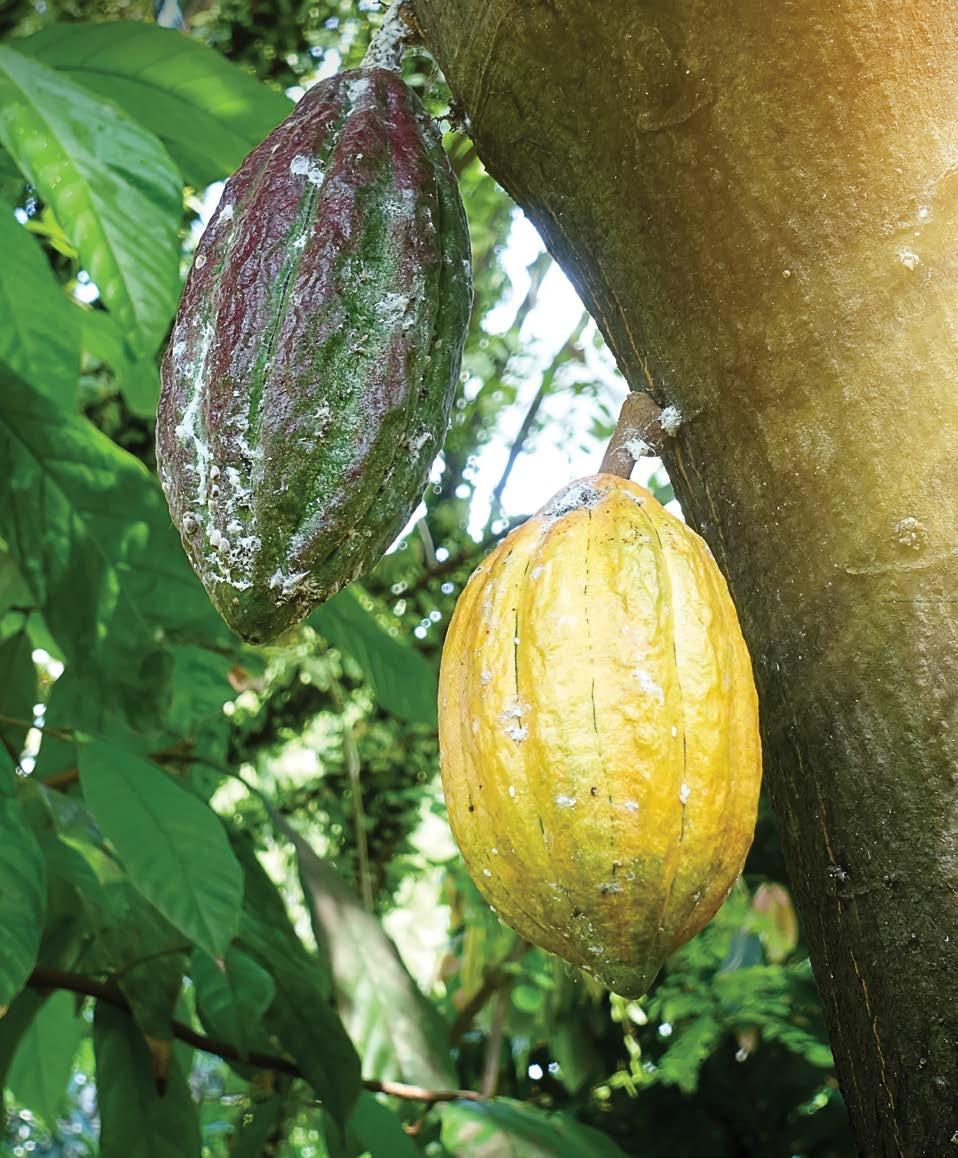
Launched in 2017 in Kokopo, the PNG Cocoa Warwagira is committed to educating PNG growers about best practices for cocoa production. During the show, beans are compared and graded with farmers awarded accordingly. The show’s objective is to enhance cocoa production so as to compete with international growers.
Prior to the Bougainville Civil War, the region was the largest producer of cocoa in PNG, which declined during the civil unrest. Launched in 2016, the Bougainville Chocolate Festival was created to encourage cocoa production in the region. Boasting chocolate tastings, films, music and games, be sure to get along to this annual celebration.
DESTINATION PAPUA NEW GUINEA
31 Strength. What we deliver by delivering. pngaf.com.pgpngaf.com.pg
Cocoa fruits (which contain cocoa beans)
PORT Moresby DINING

BACCHUS
Jackson Parade
Superb food and top notch service go hand in hand at Bacchus. Enjoy a fine dining experience that will have you coming back for more. Boasting an extensive menu and a solid wine listing, this is just the place for that special occasion.
DUFFY
Gabaka Street
A funky café that takes the right kind of care with its coffee beans. A section of the café is dedicated to boutique shopping, so visitors can shop after they’ve enjoyed some refreshments. Duffy also has a café located Harbourside.
DAIKOKU
Harbour City
Boasting Japanese Teppanyaki, Daikoku is as much about the fabulous food as it is about the experience. The restaurant is Japanese owned, so this dining experience is guaranteed to be an authentic one.
FUSION
Harbour City
Excellent quality and great service are all part of the Fusion experience. Combining Asian cuisine with a Western twist, enjoy a fine dining treat at Fusion.
GRAND BRASSERIE
Grand Papua Hotel, Mary Street
Overlooking Jackson’s Harbour, the Grand Brasserie makes a bold statement when it comes to quality and style. Combining Asian and Pacific Rim cuisine, the food here looks as good as it tastes.
GRAND DYNASTY
Vision City
Boasting the largest restaurant in Papua New Guinea, Grand Dynasty delivers authentic Hong Kong Chinese cuisine which won’t cost an arm and a leg. Enjoy Grand Dynasty’s casual setting or book a private room.
GREEN HAUS RESTAURANT
Sir John Guise Drive, Waigani
The Stanley Hotel’s flagship restaurant, Green Haus is famous particularly for its fish. The salmon is always cooked to perfection and everything is extremely fresh. Great coffee, well trained staff as is expected at the Stanley.
SILVER LEAF RESTAURANT
Sir John Guise Drive, Waigani
Five star elegance on the on the 19th level of The Stanley Hotel, one of the best hotels in the South Pacific. Silver Leaf has bespoke cuisine on a menu that constantly evolves. Elegance, excellence and experience.
LAMANA HOTEL
Lamana Road, Waigani
Offering a range of eateries including Mediterranean, Indian and Italian cuisine. Graham Ablett, the food and beverage manager at Lamana Hotel, ensures that only the best and freshest ingredients are used.
TASTY BITE
Hunter Street
Tasty Bite offers Indian and Tandoor cuisine created by authentic Indian chefs. The food is indeed tasty and no-one leaves this establishment hungry. Large seating available or choose the private room for a more intimate setting.
THE CELLAR RESTAURANT
Shady Rest Hotel, Taurama Road
Offering an exciting array of Indian and continental cuisine, The Cellar Restaurant is the place to be for choice. Famous for its dosa lunches and all you can eat Curry Club Buffet, the restaurant is also renowned for its excellent coffee.
RAPALA RESTAURANT
Crown Hotel
Described as an impeccable dining experience, Rapala Restaurant will definitely not disappoint. Blending an old-world charm with cutting-edge gastronomy, this is an Instagram moment just waiting to happen. And the food truly lives up to its image.
32
Whether you’re spending a few days or more in Port Moresby, the nation’s capital offers up a great range of dining options and regional attractions.

THE BEER YOU DESERVE
DESIGNS FROM: 1.EASTERN HIGHLANDS, 2.MADANG



3.JIWAKA, 4.WEST NEW BRITAIN , 5.AROB AND 6.SOUTHERN HIGHLANDS








Out & about
Getting around the Port Moresby region, you’ll discover a range of great daytime activities.

PORT MORESBY NATURE PARK
Showcasing zoological and botanical parks and gardens, this attraction is a great place to relax and unwind. Have the option of taking a guided tour through the gardens with a trained guide. For more information, call +675 326 0248.
TAURAMA BARRACKS
Spend a day at a safe local beach at Taurama Barracks, which offers access to the water. Taurama Barracks is about a tenminute drive along Taurama Road.
PORT MORESBY ADVENTURE PARK
Beyond the airport lies the Port Moresby Adventure Park which features water slides, a lake, fishing and fauna. A great destination for the whole family.
BOMANA CEMETERY
Bomana Cemetery pays homage to over 3,000 soldiers that perished in the region during WWII.
VARIRATA NATIONAL PARK
About an hour out of Port Moresby lies the Varirata National Park. Within the park are six walking tracks that are plainly marked, offering 40 minute to three hour treks. Keep an eye out for the amazing birdlife here, which includes the beautiful bird of paradise and kingfishers.
KOITAKI CLUB
Koitaki Club is a tranquil establishment where visitors can enjoy refreshments, swimming, horseriding and trekking.
MARCH GIRLS RESORT
Located just 45 minutes from Port Moresby along the Masi Highway, the March Girls Resort is a secure place where visitors can relax and enjoy refreshments, swimming and snorkelling. While here, ask a local to take you out to the 1.5 kilometre reef that runs parallel to the beach for some of the world’s best snorkelling.
SUNSET BAR
Located past the LNG site in Napa Napa, this groovy little bar offers basic food and beverages with lovely beach views from the deck.
DESTINATION PAPUA NEW GUINEA
35
Peak Experiences
KOKODA TRAIL
The memory of Kokoda lives in the hearts of more than 5,000 visitors who hike the trail every year. Extending 96 kilometres, the trail weaves across river systems and treacherous mountains, through tiny villages and perilous ridges. Trekking Kokoda is a life changing experience due to the sheer endurance required to complete it and the emotional connection it has with WWII soldiers. Today, war relics littered along the trail stand as a ghostly reminder of the fierce battles fought along the trail. Trekkers also get to experience complete remoteness and rare, unusual fauna. All trekkers are required to have a permit which should be obtained prior to hiking the trail. For more information, contact the KTA in Port Moresby on +675 323 6165.
KAPA KAPA TRAIL
For endurance trekkers, the Kapa Kapa Trail will prove to be the ultimate challenge. Dubbed ‘The Ghost Mountain Trail’, the track runs 170 kilometres in length and passes over the Owen Stanley Ranges at a higher altitude to Kokoda. During WWII, the trail was used by American Forces to avoid heavy fighting along the Kokoda Trail and advance upon the Japanese along the north beaches. The trail takes fifteen days to complete with an experienced tour guide and is recommended for skilled hikers only. For more information, visit www.kapakapatrail.com
MT
WILHELM
For the intrepid trekker, Mt Wilhelm presents the perfect challenge. Hovering at 4,500 metres, the peak offers spectacular views of The Highlands. Demarcating the point where three provinces converge (Western Highlands, Simbu and Madang), this hike is tailored for those with a moderate fitness level as it takes three to four days to reach the peak. For more information, contact PNG Trekking Adventures on +675 7686 6171.
MT GILUWE
As the second highest peak in PNG, Mt Giluwe offers an unforgettable trekking adventure. Take in The Highlands from a fresh perspective while you trek to the summit where not one but two peaks await you. Speak to someone at Kiburu Lodge for guided treks to Mt Giluwe.

MT HAGEN
Mt Hagen is the third highest mountain in PNG. Its remote landscape poses the perfect challenge for trekkers who want to get amongst PNG’s ruggedness. For treks to Mt Hagen and surrounding peaks in the Western Highlands, speak to someone at your accommodation establishment.
36
Kokoda, Credit: Jackson Groves, #journeyera


37 DESTINATION PAPUA NEW GUINEA
Mount Giluwe
Mount Wilhelm
Trekking Tips
• Pack synthetic clothing rather than cotton as it dries faster.
• Carry a clean pair of hiking socks for each day.
• All clothing should be stored in zip lock plastic bags inside your pack.
• Antiseptic powder should be applied to your body on a daily basis and after each river crossing.
• Carry a wide-brimmed hat to protect you from both the sun and heavy rains.
• Pack sunscreen and insect repellent, and apply regularly.
• Check local water is safe to drink and fill your camelbak regularly.
• Take up to twelve salt tablets a day (for long, challenging treks).
• Land in PNG is either communally or family owned. Ask your local guide what permit or other payment is required.
ROTOKAS-NUMA TRAIL
The Rotokas-Numa Trail, located on Bougainville, is a demanding yet gratifying trek. Lesser known than the Kokoda Trail, the track stretches from the heart of the island to the west coast canvassing dense jungle, volcanic landscapes and lush waterways. The Rotokas-Numa Trail became a battleground between the Japanese and Allied Forces during WWII, and again in the 90s between the PNG Defence Force and Bougainville Revolutionary Army. It is recommended that trekkers take a local guide with them on their travels. For more information on guided tour packages, contact Rotokas Ecotourism on +675 7078 0211.
TRANS-NEW BRITAIN TRACK
The Trans-New Britain Track boasts two routes, one through the Wowo Plateau which features a number of caves, and the other Katula Ridge which extends to West New Britain. For more information on the trek, contact Nakanai Ranges Tours and Adventures on +675 7335 3706. Both East and West New Britain have many extinct and active volcanoes worth exploring which puts you amongst some of the most stunning flora and fauna in the world.
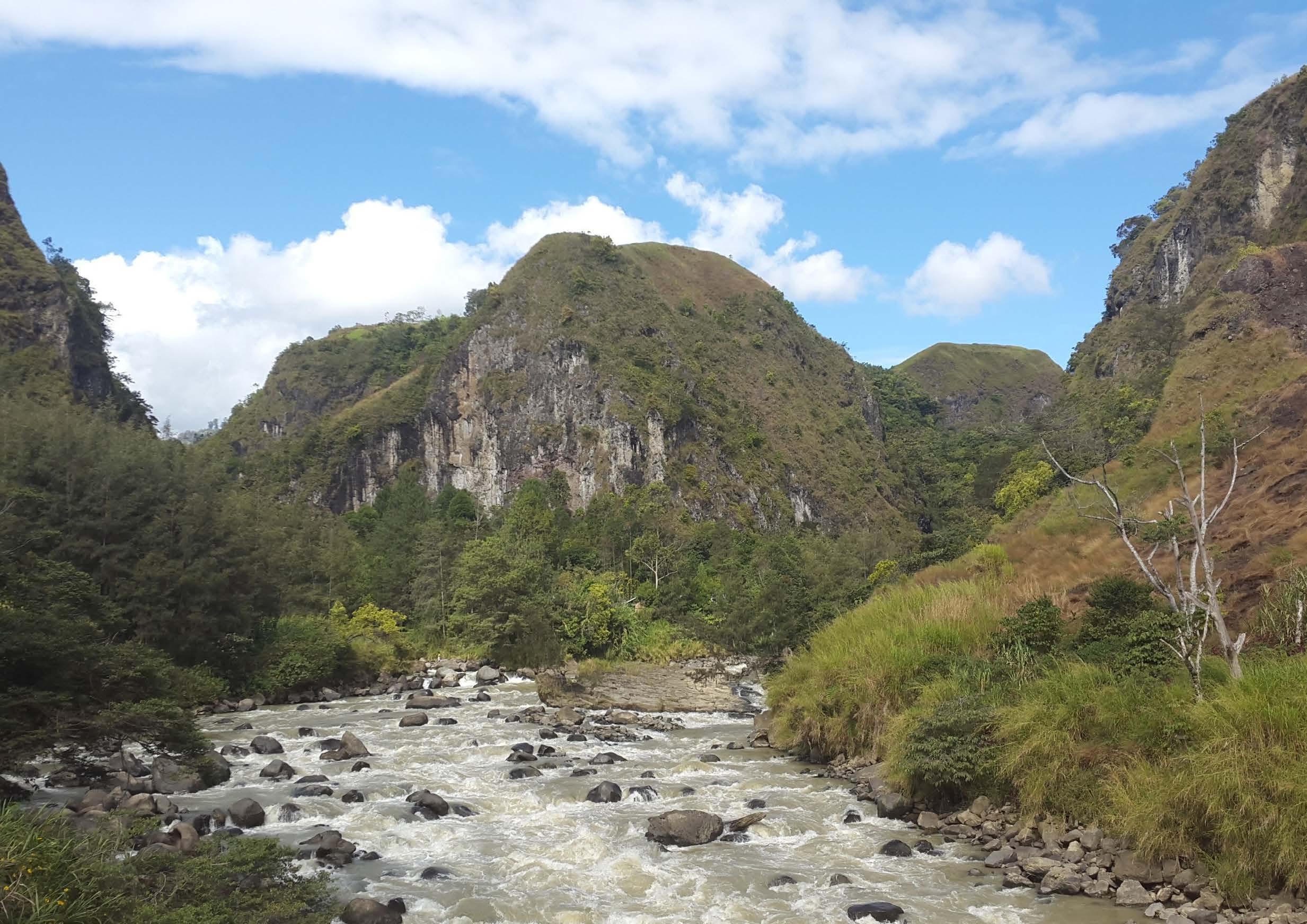
38
Near Mount Hagen, Credit: Charles Davies
exotic birdlife
Papua New Guinea provides a thriving habitat for many exotic bird species. The renowned bird of paradise is what attracts serious birders to the region.
Many visitors are drawn to PNG because of its birdwatching opportunities. Considering there are more than 700 species on record, it’s no wonder the activity is so popular. The bird of paradise is one of the most lauded species in the region, inspiring awe from travellers throughout the centuries.
It’s believed the bird of paradise first earned its name in the 16th century when European mariners deemed it heaven sent because of its stunning appearance. PNG boasts 38 species of bird of paradise, from those touting flamboyant plumage to those with alien-like antennae.
Birds of paradise are sexually dimorphic meaning the female and male look different. For example, the male often features exuberant colouration. The creature’s extravagant mating ritual is one of the most delightful visual performances you’ll ever witness.
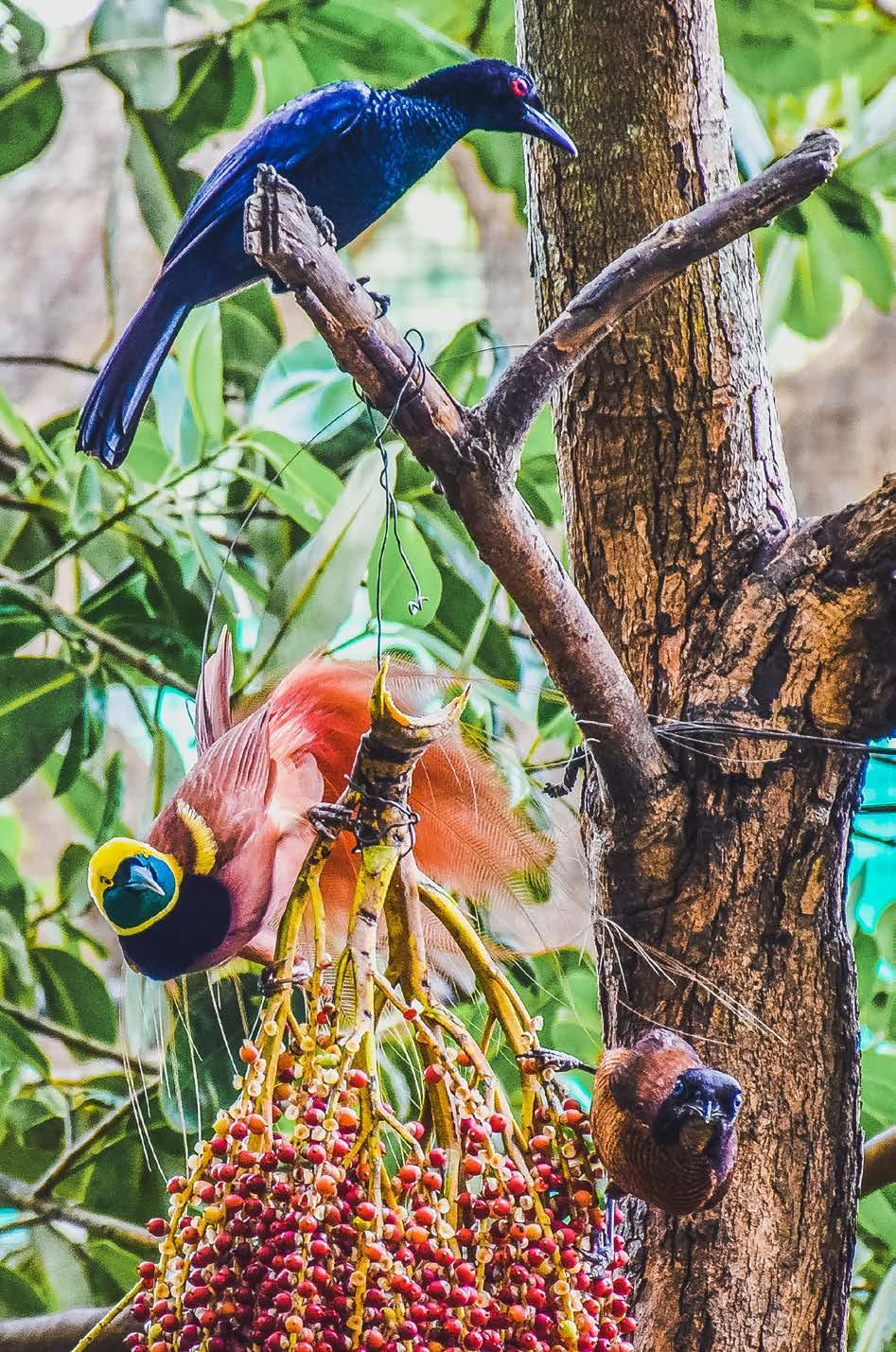
To draw the attention of a potential mate, adult males fan their feathers into a parasol shape and bring their best dance moves to the occasion. Young males learn the dance by watching
their fathers do it and then practice it into adulthood. It’s ultimately the female’s choice to mate, so plenty of work goes into perfecting the performance.
A few of the popular varieties of bird of paradise are the Raggiana, Blue Bird of Paradise, Queen Carola’s Parotia and King of Saxony. Morning time is best to catch the bird of paradise in its natural habitat. Birders travel to PNG for many other rare and unique species. Ask your accommodation establishment about a birdwatching tour.
REGIONS & TOURS
Due to its elevated location, Tabubil in the Western Province attracts an awe-inspiring range of exotic bird species, in particular the bird of paradise. Kiunga Nature Tours (KNT), run by Samuel Kepuknai, has been offering birdwatching tours since the 1990s. KNT offers a Tabubil Bird Area Tour for those keen to explore the birdlife in the region.
Kiunga is world renowned for its birdwatching as it attracts a stunning range of exotic species. KNT has a Kiunga Bird Area Tour that boasts four different sites to view birdlife.
Bensbach Wildlife Lodge, also in the Western Province, has 191 bird species on record so provides plenty of opportunity to spot both endemic and migratory species. Ambua Lodge is an eco-lodge located in the Hela Province in the Highlands. The region is home to 217 bird species with 13 types of bird of paradise so it’s a mecca for birding enthusiasts. The lodge has local guides on hand who can provide leisurely birdwatching tours or more customised tours for serious birders. For more information on birding tours at the Bensbach Wildlife Lodge, Ambua Lodge and Lake Murray Lodge, contact Trans Niugini Tours on +675 7198 9397.
While the mainland is flush with birdlife, the islands of PNG feature their own fascinating species. The Walindi Resort in Kimbe, West New Britain, offers birding tours. For more information, call the resort on +675 7234 8460.
Watch out for
• Bird of Paradise
• Victoria Crowned Pigeon
• Black Sicklebill
• Azure Kingfisher
• Classical Emperor Fairy Wren
• Nicobar Pigeon
• New Guinea Vulturine Parrot
• Black Sicklebill
• Rainbow Bee-eater
• Flame Bowerbird
• Forest Bittern
39 DESTINATION PAPUA NEW GUINEA
MADANG
Nestled on a beautiful peninsula, Madang is surrounded by picturesque islands and lush highlands.

Archaeological relics such as stone-axes discovered in the region suggest that it was first settled somewhere around 40,000 years ago. Like many areas in PNG, Madang has more recently exhibited a history of changing colonial rule. In the late 19th century, Madang was colonised by German expansionists, who established missionary stations and planted European crops, only to be overtaken by the Australian military in 1914. During WWII, the Japanese captured the township of Madang and bloody battles raged until eventually it was liberated by Allied troops in 1944. At the end of the war, the beleaguered township had to be rebuilt over the ensuing years.
Today Madang’s tropical beauty shines making it one of PNG’s top tourist destinations. Renowned for its azure waters, it’s the perfect place to embark on a dive adventure. Rainbow coral reefs, bommies and WWII wrecks provide divers with plenty to explore with the oceanic currents luring both pelagic and reef varieties of fish. Be sure to check out Planet Rock, Barracuda Point, Eel Gardens and Magic Passage, which are just some of the popular dive sites. Call Niugini Dive Adventures on +675 7999 1661 for bookings.
For a leisure activity on land, Madang Golf Course is a magnificent 9-hole course set against a natural backdrop of ocean and hinterland. It’s definitely worth a visit even if you’re not a golf enthusiast.
Madang is a great base from which to explore the Madang Province. For trekkers and nature lovers, the Kau Wildlife Nature Walk is worth exploring. Kau is the name of the area that is located approximately 22 kilometres north of Madang, and is also the home of the Ohu Butterfly Farm where visitors can view the diverse and beautiful array of butterflies found in this exotic region.
One hour north of Madang lies the Buai Market which sells the famed betel nut. A little further along, the Daka Market is also worth checking out. Daka is consumed with crushed lime when chewing betel nut to enhance its stimulating effects. Both markets provide a cultural insight into the Melanesian way of trading.
If you continue north for another hour, you’ll encounter Banara which is a picturesque coastal area where you can enjoy snorkelling or lounging away the hours. When you arrive at Banara, visit the first house and ask the chief for permission to enter. It’s customary to offer the chief a small payment or bag of rice as a gesture of your gratitude.
Pig, Kranket and Wangant Islands are great choices for snorkelling and diving in the area. Located on the outer reef of the Madang Lagoon, the waters here are always clear which is perfect for viewing marine life. Transport to Pig Island can be arranged through your hotel or, for something more adventurous, ask one of the staff about getting a ride to Pig Island on one of the local boats. At Kranket Island, you can wander through pristine bush land and stop by the large inland lake. Accommodation is available on Kranket Island at the Kranket Island Lodge.
40
Aerial view of Madang, Papua New Guinea
Kar Kar is an active volcanic island that offers visitors the opportunity to trek to its peak. The volcano is three kilometres wide at its mouth and the rich, unique soils have encouraged the proliferation of an extensive range of unusual flowers. Cocoa beans also grow very well in Kar Kar’s fertile conditions. The five and a half hour trek is not an easy walk, but you can pay a guide to assist you with carrying food and water. If you’re interested in culture, Kar Kar celebrates the Bilum Show in June each year. You can organise boat travel to the island via your resort or by contacting the Madang Visitors and Cultural Bureau on +675 422 3302. It’s also worth dropping into the Madang Visitors and Cultural Bureau to see its huge display of memorabilia. The staff can assist you with discovering more things to see and do in and around Madang.
Game fishing will reap a fine catch in the waters surrounding Madang, with mackerel, tuna, kingfish, barracuda, marlin, wahoo and yellow fin all found in abundance here. Madang Resort charters game fishing boats and also offers a range of other activities. The resort features a ‘Haus Tambaran’, an ancestral spiritual house, where visitors can enjoy a quintessential cultural experience. Alternatively, take a cultural tour to Bilbil Village to see the local women crafting traditional pottery.

For surfing enthusiasts, the Tupira Surf Club is a bush-style surf resort that caters to intrepid surfers seeking remote conditions. The club is found on the north coast heading out of Madang on the main highway, and is about one and a half hour’s drive from Madang.

Jais Aben Resort offers Real Life Village Tours, where guests have the opportunity to experience genuine village ceremonies including the traditional killing of a pig. The resort also offers River/Jungle Tours for guests who want to trek through rugged terrain.
If you’re in Madang during the Queen’s Birthday weekend, be sure to check out the Madang Festival which features rich displays of cultural dance, song and entertainment. Another event worth checking out is the Kalam Cultural Festival in Simbai which occurs in August. Contact MTS PNG on +675 422 2655 for more information on tours that coincide with major cultural shows.
There is no shortage of accommodation in Madang with resorts such as Madang Resort, Jais Aben, Kalibobo Village, Madang Lodge and Coastwatchers Hotel all offering first rate lodging.
Sights & Attractions
• The Madang Festival
• Diving Planet Rock & Magic Passage
• Pig, Kranket and Wangant Islands
• Bilbil Village Cultural Tour
• Madang Golf Course
• Game Fishing

DESTINATION PAPUA NEW GUINEA 41
With its deep port and central northern location, Lae is the home of industry and export in PNG. Vastly different to the commercial environs of Port Moresby, Lae is responsible for a large portion of the country’s annual economy. It also played a central part in the battle for the region in WWII.
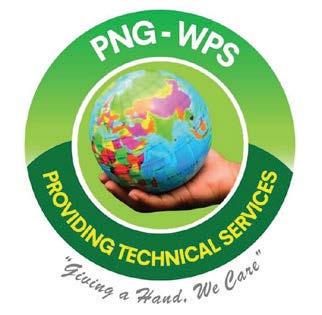
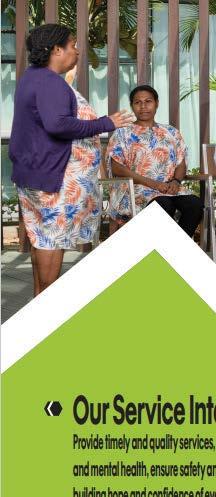
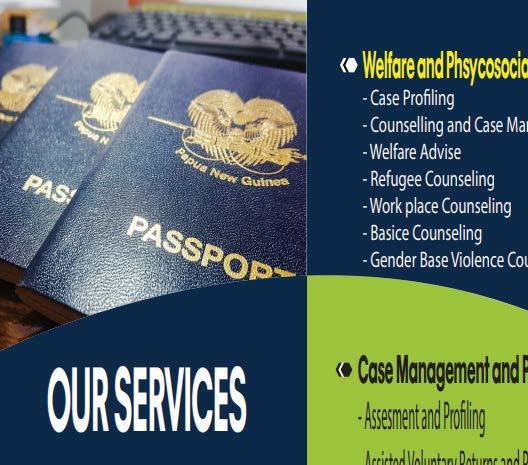

The Lae War Cemetery is the resting place for 2,808 soldiers buried here as a result of the WWII operations in PNG. Most of the burials comprise of Australian servicemen, with only 19 being British. There are also 426 Indians buried within the grounds who were taken prisoner whilst fighting in Hong Kong and Malaya. The cemetery is opened most days with free entry. There’s a large building in the centre of the cemetery that features information on the WWII battles including a register showing a complete report of the casualties.
Another interesting yet lesser-known attraction in Lae is the Japanese Memorial, which is on the way to Wagang Village. To get to the memorial, drive out past the Pistol Club and keep going towards Malahang. Just as you arrive at the Malahang Industrial Estate, take a right hand turn towards the coast and you’ll see the memorial about half way along. The best place to locate a guide for this area is at Wagang Village where you can ask to speak to an elder for assistance.
While in Lae, check out the Rainforest Habitat, which is located on the grounds of the University of Technology. Here you can view indigenous flora while watching an array of PNG fauna from the raised viewing platforms. The habitat is home to Agro, a massive Salty Crocodile.
The Lae National Botanic Gardens were recently restored and opened to the public. The gardens are open daily and tickets for entry can be purchased from the Forestry Research Institute. The Crocodile Farm, a commercial enterprise which also supports the conservation of wild crocodiles, is also worth a visit. For fresh produce and exotic flowers, visit the Lae Main Market open Monday to Saturday.
42
lae
• Agent For Work & Passport • Contract Modelling & Management • Case Management & Placement • Welfare & Psychosocial Support K & R Welfare and Placement Services is a welfare and placement business
in welfare and counseling, case management and placement, contract
A: P.O. Box 75, Vision City Post Office, WAIGANI, NCD, PNG T: +675 72139745 E: info@knrwpservices.org W: www.knrwpservices.org knrwpservices.org OUR SERVICES
Explore all that Lae has to offer. Travel beyond to the beautiful Ramu and Markham Valleys.
specializing
modelling and management with office in Port Moresby, Papua New Guinea.
Lae was the last departure point for the famous Amelia Earhart who, in 1937, wanted to be the first person to fly around the circumference of the world. After 29 days of flying, Earhart and her navigator, Fred Noonan, touched down in Lae on 30 June 1937 to a rousing audience. Unfortunately, during the next leg of their journey, Earhart and Noonan were unable to get an accurate weather forecast and ran directly into a storm which was ultimately blamed for taking their lives. Today, the two are honoured as modern day heroes in Lae where a memorial stone and plaque has been erected in Independence Park on the Coronation Drive/Markham Road Junction.
It’s possible to travel from Lae to the Highlands or Madang through the beautiful Ramu and Markham Valleys. From Lae, take the Highlands Highway out past Nadzab Airport until you reach the open paddocks of Ramu Valley. If you travel past this point, you’ll arrive next in the Markham Valley. From the Markham Valley, drive another 45 minutes until you come to a branch in the road. Turn left if you want to travel up the mountain through the Markham Pass and on to Goroka and the Highlands. Turn right if you want to drive on to Madang.
If you decide to explore Ramu Valley, you’ll discover lush farmlands nestled in a backdrop of rolling hinterland. During WWII, the region was a strategic location for the Allied Forces to expand their war efforts. After securing Lae, the 7th Division’s next task was to take hold of the Ramu and Markham Valley regions. Kaipit was seized between 19 and 20 September and Dampu followed on 4 October. The Japanese retreated to Shaggy Ridge and Allied Forces had to tackle difficult, mountainous terrain in order to execute their next victorious battle taking the ridge on 19 January 1944.

Today the Ramu Valley is known for its agricultural produce such as sugar cane, poultry and cattle farming. The township of Ramu resembles a simple outpost, but behind the façade is the picturesque property of the New Britain Palm Oil Company, which acquired Ramu Sugar Company in 2008. The property boasts manicured gardens, an 18-hole golf course, tennis courts and a war memorial. Although not officially open to the public, the Ramu Agri Industries Guest House offers accommodation, a restaurant, a swimming pool and a cosy bar. For bookings, contact Ramu Agri Industries in Lae on +675 474 3299.

If you’ve decided to visit Ramu for a day or two, make sure you speak to your accommodation staff about the local bush treks. The treks can vary in length from a few hours to more adventurous full day treks up to the mountain behind Ramu or through the Wairius River to Wairius Hill. If you are travelling on to Madang or the Highlands, be sure to travel with a local who can assist you in case you encounter any issues.
Lae is home to the famous Morobe Cultural Show so be sure to check it out if you’re around in October.
Sights & Attractions
• Lae War Cemetery The Japanese Memorial
• The Morobe Cultural Show
• Lae National Botanic Gardens
• The Rainforest Habitat
• Ramu Valley
DESTINATION PAPUA NEW GUINEA 43
Kratke mountain range around Ramu river and valley
TUFI
Tufi is renowned throughout Papua New Guinea for its famed Dive Resort. This resort is not only an icon, but reputed to be one of the best dive locations in the world. What many travellers don’t realise is that Tufi is also a peaceful village that offers visitors a wonderful interaction with locals who are intriguing and kind-hearted.
Surrounded by striking and diverse habitats, Tufi shows its splendour through its rainforests, plantations, coconut groves, grasslands and coastlines consisting of calm, protected waters. These waters showcase a unique and largely unexplored reef system with biodiverse marine life and WWII wrecks to discover.
Tufi offers you a spectacular marine experience on a platter, offering all year round diving. The fjords are reputed for their macro diving and, with very little current movement, you can spend time examining the sponges and corals while sharing the environment with the gobies, nudibranch, shrimps and clams.
The outer reef experience is unsurpassed with visibility exceeding 30 metres all year round and a water temperature of 26–29 degrees Celsius. Here you’ll unearth an abundance of marine life including the rare white hammerhead shark.
If adventure is what you’re looking for, then Tufi has it all. Treks to the twin peaks of Mt Trafalgar and Mt Brittania and safari expeditions will see you discovering virgin rainforests in all their glory.

The butterflies in Tufi are of particular importance. Both the Papilio Ulysses and Queen Alexandra Birdwing, with a wingspan of up to 28 centimetres and spectacular iridescent colouring, reside in Tufi. Not to be outdone, the world’s longest stick insect, largest grasshopper and longest beetle also call this region home.
As a cultural note, the women of Tufi are known for their facial tattoos which are tattooed on when young girls reach around fourteen years of age. These tattoos cover the entire face and although they are not compulsory are seen as a sign of maturity and a rite of passage into womanhood. This experience involves young females undergoing an operation of needles and charcoal over many hours. The charcoal is rubbed into the wounds twice to ensure that it results in permanent markings.
Guests can fly from Port Moresby to Tufi. Tufi also offers a range of accommodation from the luxury Tufi Dive Resort to local guest houses which provide more of a village experience. For more information on the resort, visit www.tufidive.com
44
View of the Fjord From Tufi Resort





45 DESTINATION PAPUA NEW GUINEA
The Highlands
Mount Hagen is the capital of the Western Highlands Province and is famous for the Mount Hagen Show. The township is named after an extinct volcano in the northwest which is said to take its name from Colonel Curt von Hagen.


The prevalence of German-named landmarks in Mount Hagen is derivative of the period 1884 to 1914 when the area was colonised by Germans and known as German New Guinea. Subsequently, the region was overtaken by Australian Forces in 1914 following the onset of WWI.
The Highlands region was only recently developed in the 20th century with some conjecture about who was responsible for first opening up the area. Australian Mick Leahy had previously been prospecting for gold in the Morobe Province when in 1933 he and his brother, Danny, trekked extensively throughout the Wahgi Valley in search for more gold. An Australian Patrol Officer by the name of James (Jim) Taylor embarked on the same patrol to explore the region with the brothers. Some reports state that the Leahy brothers led the expedition, while others suggest Taylor led the patrols. Nonetheless, in 1936 Mick’s claim was recognised by the Royal Geographic Society, and later again in 1971 by the US Explorers Club.
Previously having built an airstrip in Bena Bena at Goroka, the Leahy brothers went on to build an airstrip in Kelua to have regular supplies brought in. They were then able to establish a base at Kuta where they eventually found a creek with gold, which later became Kuta Goldmine. As Papua New Guineans traded in Kina shells, Mick was able to have the shells flown in for a minimal cost enabling him to support a large work force to develop his explorations for gold.
While the brothers were moderately successful in their gold digging endeavours, what they didn’t realise was that the mountains were abundant in gold deposits sitting just below the surface. These gold deposits were so rich, in fact, that when they were eventually discovered the entire country would ride the back of this resource for decades to come.
Taylor ultimately settled in Goroka and married Yerima, a local from the Minj/Banz area. He eventually acquired land and was credited with planting some of the first crops of coffee in the region.
If you’d like to experience some of the terrain that the Leahy brothers and Taylor tackled, then set aside time to do some trekking while you’re in the area. Elevated at 5,500 feet, Mount Hagen’s lush and rugged hinterland is the perfect challenge.
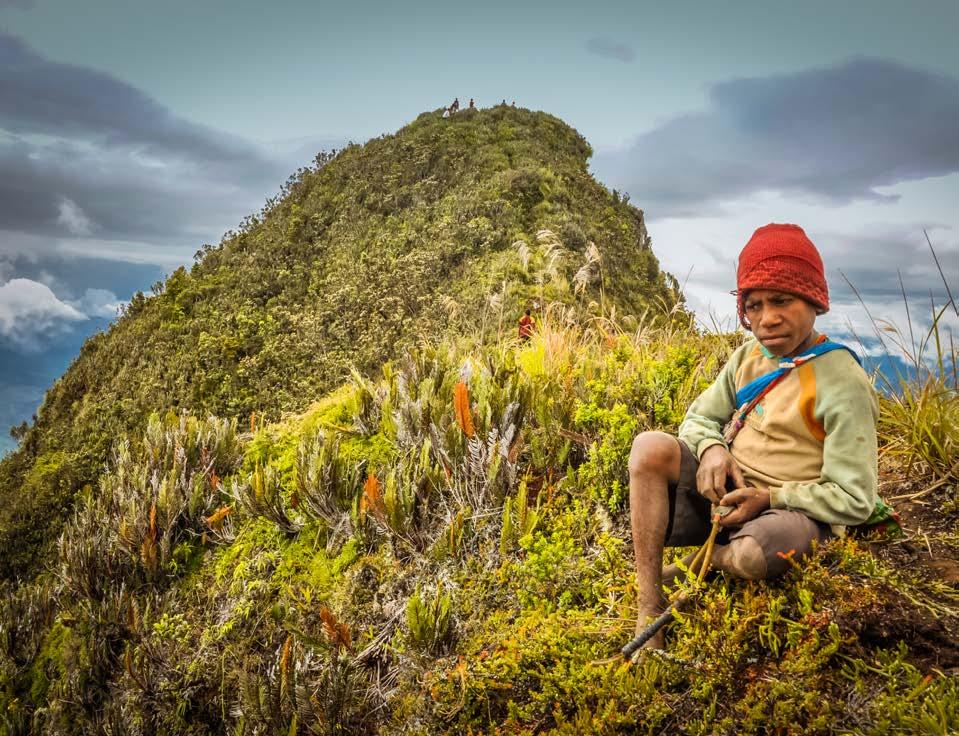
46
Situated in the Wahgi Valley, if you’re keen to explore its surrounds for exotic flora and fauna, book a guided trek. For trekking up Mt Hagen, the third highest peak in PNG, call Paiya Tours on +675 7685 8183. Hiking to the summit of Mt Hagen takes approximately three hours for experienced trekkers and four hours for amateurs. This trek is best suited to active individuals.
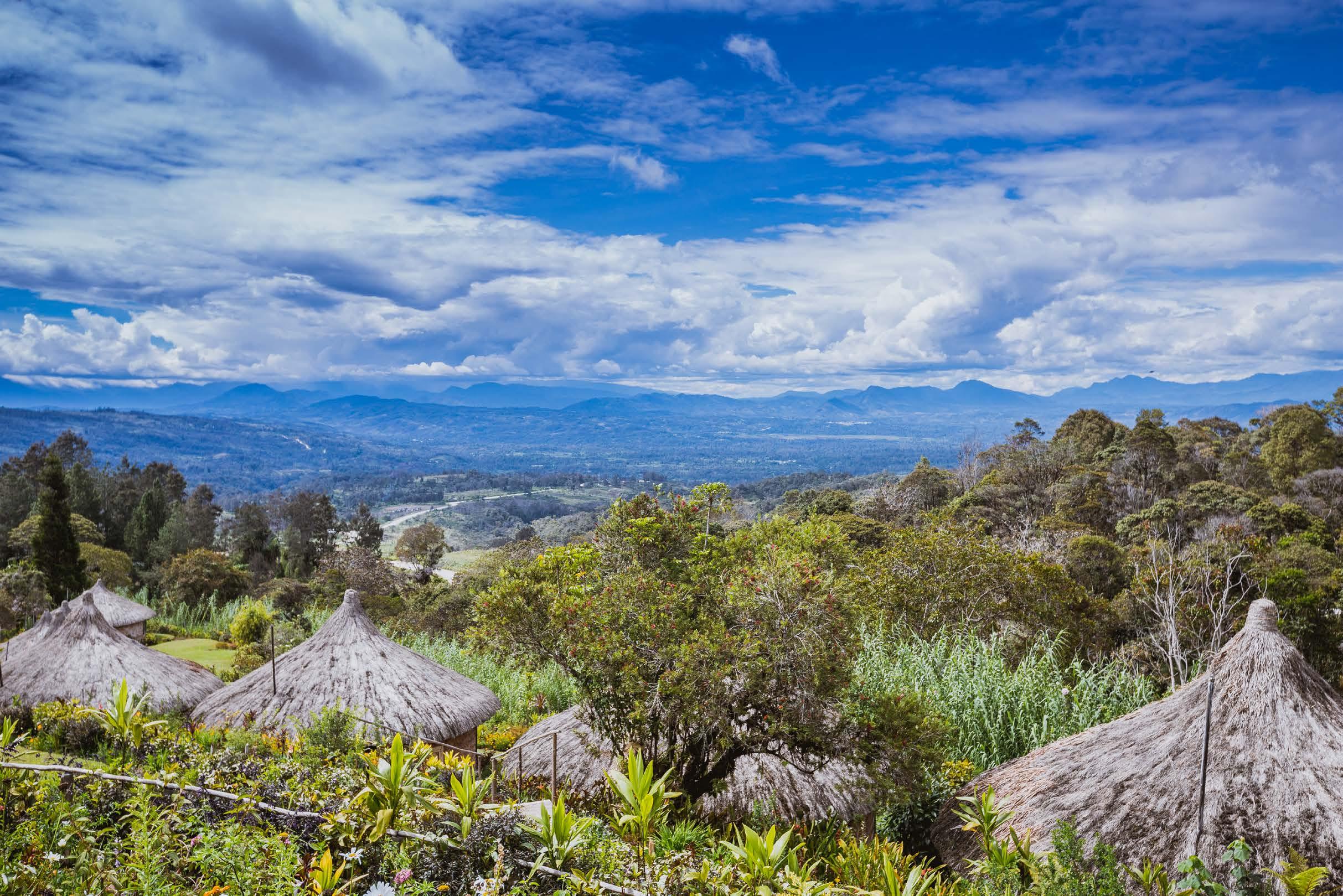
Today, with mining and agricultural ventures into coffee, sweet potatoes and potatoes, Mount Hagen has expanded to become the commercial hub of the Western Highlands. The cooler climates and high altitudes are particularly ideal for growing Arabic coffee for which the area of Banz is renowned. Ironically, anthropologists have found that the region is the oldest, continuously farmed area on earth, with agricultural practices dating back 9,000 years. There is some debate about whether or not the farming process has been continuous or whether it has been intermittent over the centuries. Nonetheless, it is a remarkable fact given the remoteness of this part of the world.
Trans Niugini Tours is one of the main tour operators in Mount Hagen and offers birdwatching, trekking, fishing and other tailored activities. For more information on tours call +675 7198 9397. There’s also a number of more localised tour operators in Mount Hagen. Simply ask one of the staff at your accommodation to point you in the right direction.
The Western Highlands is home to Baiyer River Sanctuary, which extends across a massive 740 hectares and includes 185 species of birdlife. This spectacular nature park and its wildlife are a must-do while you’re in the region.
In August every year, Mount Hagen boasts a feast of activities as it plays host to the ever-popular Mount Hagen Show. First launched in 1964, this festival continues to showcase the rich heritage of the local culture featuring 75 tribes from throughout PNG. If you’re interested in Indigenous culture and your timing is right, this is one event not to be missed.
On Saturdays you can visit the Hagen Market, one of PNG’s foremost markets for fresh produce and other interesting items such as highland hats.
Sights & Attractions
• The Mount Hagen Show
• Trekking Mt Hagen
• Birdwatching
• Baiyer River Sanctuary
• The Hagen Market
Southern Highlands. Tari.
DESTINATION PAPUA NEW GUINEA 47
MILNE BAY
Alotau and Tawali provide the perfect base from which to explore Milne Bay. Snorkelling, diving and caving are just some of the popular activities available in the region.
Milne Bay is renowned for the battle which famously led to the Japanese Army’s first defeat on land. In 1942, the Battle of Milne Bay saw the Japanese marines disadvantaged when they landed over ten kilometres from their intended target and underestimated the manpower of the Allied Forces. Nevertheless, the Japanese charged at the Australian Forces but the 2nd Australian Imperial Force units, backed up by strong aerial support, set the stage for success. Suffering heavy casualties, the Japanese withdrew from the area just two weeks later. The Australian War Memorial in Alotau Harbour honours the Battle of Milne Bay and provides a detailed account of the battle for those interested in war history.
Known as the gateway to the Milne Bay Province, Alotau provides access to some of the most amazing coral reefs in PNG which are renowned for muck diving and manta rays. Tawali Resort is located one and a half hours and a fifteen minute boat ride from Alotau, and offers great dive adventures

in the region. For more information, call the resort on +675 7364 0607 or +675 7223 5385.
While in Tawali, don’t miss out on seeing the skull caves, the most popular of which lies in proximity to the resort. Be sure to take a local guide with you to help navigate the way and check out Hiliwau Waterfall, which is just a ten minute walk from Tawali Resort.
Milne Bay boasts a diverse array of game fish such as wahoo, dogtooth tuna, mackerel and Papuan black bass, just to name a few. If you’re interested in game fishing, speak to the Milne Bay Tourist Bureau to get the names of some reputable fishing charters in the area.
Milne Bay, like many parts of PNG, is a mecca for exotic bird species such as the beautiful bird of paradise. Make sure you get up early because this incredible bird does its seductive dance at the break of day. For tours and other attractions, speak to someone at your accommodation establishment.
48
If you’re in Alotau around November, make sure you catch the Canoe and Kundu Festival to witness warriors in traditional dress and canoes racing on the waters. It’s a wonderful homage to a bygone era and a way to experience the culture firsthand. For accommodation in Alotau, try the International Hotel, Masuarina Hotel, Education Milne Bay Centre, Hiwei Hiwei Hotel, Napatana Hotel, Bayviews Hotel or Driftwood Hotel. For other accommodation in the region, try the Tawali Resort or Doini Resort which is located two hours from Alotau.



Alotau and Tawali are also great launching pads to explore the D’Entrecasteaux Islands, which is a cluster of islands including Fergusson, Goodenough and Normanby. When missionaries first arrived in Milne Bay, cannibalism was still practiced on Fergusson Island which was generally driven by warfare. Cannibalism was also a way to grieve ancestral death by ingesting the flesh which was believed to preserve the characteristics of loved ones. For locals on Fergusson Island, their flesh eating traditions continued all the way up to the 1960s. That all changed, however, when they encountered an unexpected visitor.
One day a curious helicopter pilot visited Fergusson Island. Sensing the locals’ hostility, the pilot hightailed back to the chopper losing a shoe during his lucky escape. The locals, believing the shoe comprised part of the pilot’s foot, proceeded to cook it up in soup. They drank the broth (susu) but when it came to carving the shoe found it was too tough to consume. Three months later, the intrepid pilot returned to the island, but this time the locals did not attack him. Warnings of his unappetising flesh had spread quickly throughout the island so the natives kept their distance. As a result, the island became safe for other explorers who followed as the locals were too frightened to eat them.
If you have time, be sure to island hop across to Fergusson, Goodenough and Normanby which all boast interesting attractions. The Trobriand Islands also offer a unique look at island life.
Boiboiwaga Island, which is only 45 minutes away from Tawali by dinghy, boasts white sandy beaches and is a top location to both picnic and snorkel. At the southern most region of PNG lies Samarai Island, which acted as the regional headquarters for the PNG government until 1968. Samarai Island provides accommodation and nearly anywhere in its vicinity there are tropical beaches and reefs with stunning marine life.
Sights & Attractions
• The Canoe & Kundu Festival
• Diving for Manta Rays
• Spotting Birds of Paradise
• The Skull Caves

• The D’Entrecasteaux Islands
• The Trobriand Islands
Scene from the port of Alotau, Milne Bay
Traditional canoes in Alotau, Milne Bay
Tourists browsing market stalls of Alotau, Milne Bay
49
Skulls along the edge of the Cave on Doini Island
DESTINATION PAPUA NEW GUINEA
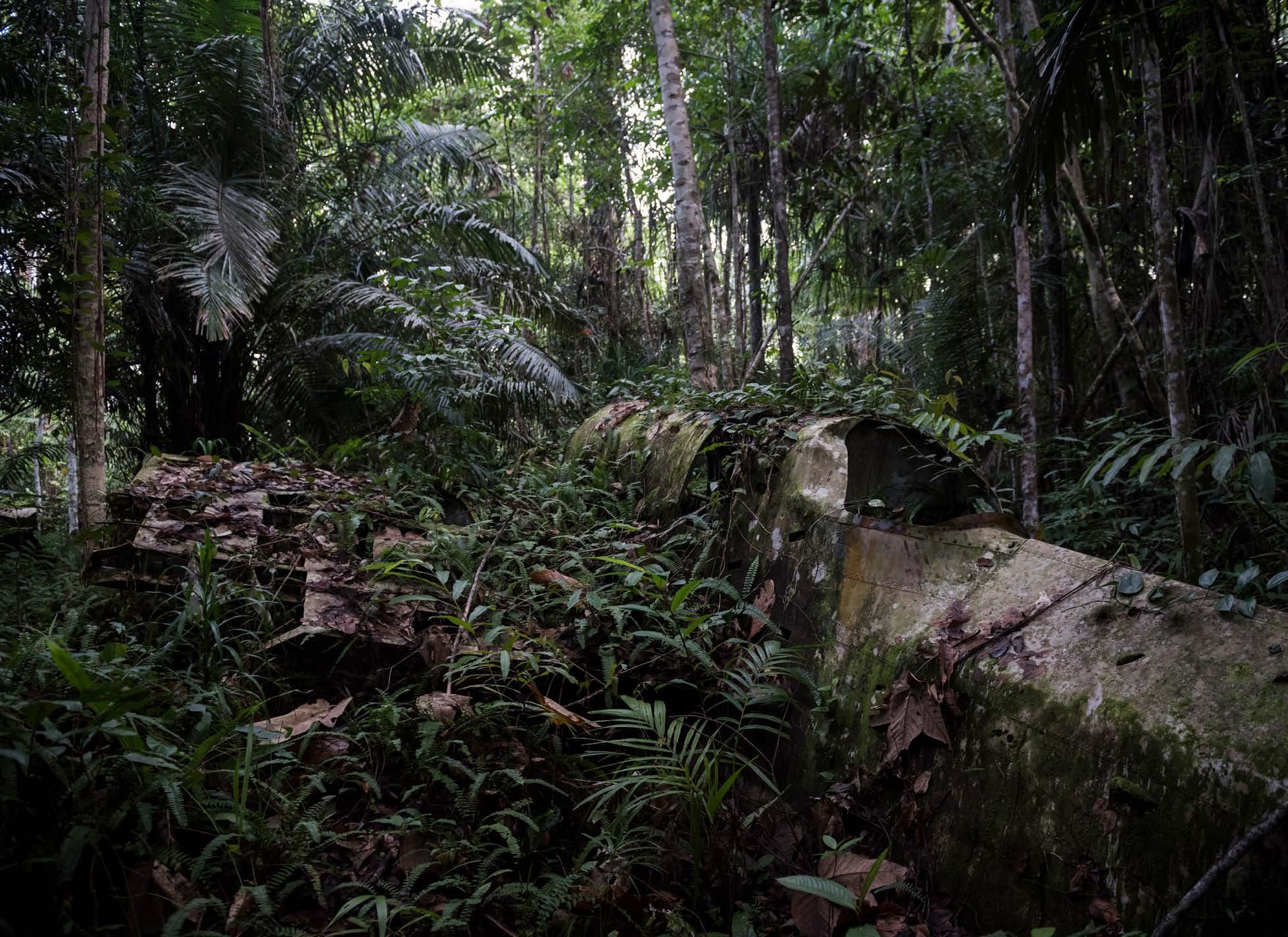

50
Kokoda, Credit: Jackson Groves, #journeyera
A WWII aircraft sits abandoned in jungle on what was once a military airstrip, Aitape
BATTLE TRAIL
For a relatively young nation, Papua New Guinea boasts a captivating history which has been interspersed with political intrigues and a bloody world war.

During WWII, the Japanese set their sights on capturing PNG which they believed would secure a foothold in the South Pacific and lead to regional domination. The New Guinea Campaign is the broad term used for the battles that ensued between the Japanese and Allied Forces between January 1942 to August 1945. Intricate strategies and bloody combats marked an unsettling period in PNG and many lives were lost on both sides. Here’s a snapshot of some of the major battles and events that occurred in the region during WWII.
January 1942: Japanese troops capture the township of Rabaul on East New Britain to utilise as a base. Over the next twelve months, they build infrastructure that will support a range of aircrafts and naval ships.
March 1942: Japanese troops take Lae and Salamaua without resistance. Meanwhile, the Allied Forces establish Port Moresby as a strategic war base.
July - August 1942: Japanese troops capture Buna in the Oro Province.
25 August 1942: The Battle of Milne Bay highlights the Japanese Force’s first defeat on land over a period of just two weeks at the hands of the Allied Forces.
September 1942: The famous Battle for Brigade Hill rages along the Kokoka Trail where many Australian soldiers perish trying to hold Japanese Forces from advancing closer to Port Moresby. In the first instance, Australian troops are forced to retreat, but later regroup to charge in a counter attack from Imita Ridge to recapture Kokoda. Today, the Kokoda Trail is an emotional trek for many visitors to the region who get to experience first hand the arduous conditions that WWII troops encountered along the trail.

November 1942 - January 1943: The Battle of BunaGona sees Allied Forces attack Japanese troops that are based at Buna. It is a messy battle with the Allied Forces initially beleaguered by rugged jungle conditions and strong opposition from the enemy. Finally, the Allies secure the region but not without many casualties on both sides.
April - September 1943: The Salamaua-Lae Campaign leads to the Allied Forces securing Lae on 16 September.
November 1943 - March 1944: The Huon Campaign comprising of a number of battles extends over five months along the Huon Peninsula on the north-eastern region of PNG. It aids the Allied Forces to push Japanese troops further north away from strategic positions such as Port Moresby and Lae.
September 1943 - April 1944: The Battle of Shaggy Ridge marks a number of battles that take place within the Finisterre Range, commencing at Ramu Valley and ending in Madang with the Allied Forces dominating.
November 1944 - August 1945: In 1942, Aitape is taken by the Japanese but later recaptured by the Allied Forces in 1944. The Aitape-Wewak Campaign sees the Allied Forces head east toward Wewak to decimate the dwindling Japanese troops. Cape Wom serves as the location where the Japanese finally surrender in August 1945 heralding the end of WWII.

51 DESTINATION PAPUA NEW GUINEA
ISLANDS ESCAPES
EAST NEW BRITAIN
The capital of East New Britain is Kokopo, which lies in proximity to the original capital of Rabaul. Rabaul was destroyed in the volcanic eruptions of Tavurvur and Vulcan back in September 1994. Today, both townships provide a perfect base from which to explore the region.
Rabaul boasts an impressive collection of war relics, tunnels and caverns from the 1942 occupation by the Japanese. With a day’s notice, the Rabaul Hotel can organise local guides to take visitors around to see the remnants.

The Rabaul Volcanological Observatory was established after the 1937 eruption at Rabaul. The observatory is responsible for monitoring 14 active and 23 dormant volcanoes spread along three volcanic arcs throughout PNG. Nonetheless, the prevalence of volcanoes with their steep, rocky formations make for some memorable treks. Treks around Rabaul include walking from Volavolo Village to Mt Mother, the tallest mountain in the area. The hike to the top of Mt Mother is a sheer climb to 700 metres but offers fantastic views.
East New Britain is a great place to birdwatch as it is home to a number of exotic birds including the renowned hornbill. The caves in the region are regarded as world class, so be sure to check out the caves at Pomio which can be accessed by boat or vehicle.
If diving is your passion, the WWII wrecks that litter the reefs surrounding East New Britain offer diving and snorkelling with excellent visibility year round. Simpson Harbour, the location where 54 Japanese ships were sunk during the war effort, and the Beehives (a small group of craggy islands) both offer great diving. Tavui Point, once an official submarine base, provides fantastic snorkelling over Japanese submarines.
Sport fishing for marlin and dogtooth tuna is available in the waters around both New Britain and Duke of York Islands. Boats operate from Rabaul, and hotels and guesthouses can also organise trips for you. The beautiful Duke of York Islands are remote but easy to access. The islands are also perfect for canoeing, swimming and snorkelling with accommodation available on some.
The Baining Fire Dance, which is unique to East New Britain, is routinely performed at night and showcases young men wearing distinctive masks dancing energetically in and out of fire. The dance is believed to be a rite of passage for Baining progeny and is performed to spirited chanting and drumming. Held in July each year, the National Mask Festival in Rabaul pays homage to the sacred masks of the region. The Frangipani Festival held in September features the Baining Fire Dance, sing-sings, a parade and much more.
Sights & Attractions
• Yamamoto’s Bunker
• Kokopo War Museum
• The Japanese Peace Memorial
• The National Mask Festival
• The Frangipani Festival
• Diving George’s Wreck
• Trekking Mt Mother
52
WEST NEW BRITAIN

While geographically conjoined with East New Britain, West New Britain is officially a separate province. Kimbe is the capital of West New Britain and birdwatchers will be thrilled to learn that there are no less than 50 endemic species of birds in the Niugini Islands, 18 of which are found around Kimbe alone. The months of June, July and August are best for birdwatching as this is the mating season for the bird of paradise. Ask for assistance at Liamo Reef Resort or Walindi Plantation Resort with employing a guide to show you these magnificent creatures.
There are two plane wrecks in Talasea that are worth checking out. One of the wrecks is a US Mitchell B25 bomber and the other is a Lockheed Vega Ventura. The wrecks are located within 50 metres of each other and offer an insight into the hardships endured by fighting forces. The B25, which was employed to attack Japanese ships in Rabaul Harbour, was force landed after being hit by enemy forces on the portside wing.
The Garu Hot River, located in the hills behind Talasea, is an incredible feat of nature. With its fast flowing rapids, its hot water is a contradiction to the senses. The water runs at just over 41 degrees Celsius and is reputed to have therapeutic properties. You’ll need a four-wheel drive vehicle if you want to travel to the river.
While you’re near Garu Hot River, you’ll observe the villagers farming the eggs of the local megapodes, commonly known as the scrubfowl. Megapodes are similar to a large chicken and lay eggs continually. They take advantage of the warm volcanic earth that surrounds the hot river area and dig large holes in which they lay a clutch of eggs. Megapodes don’t sit with the eggs, but rather return when the eggs are due to hatch to clear a way for the hatchlings to exit. Locals harvest megapode eggs from the volcanic ash as a source of food and income.
For divers, there are many great options available around Kimbe with tours organised via Liamo Reef Resort or Walindi Plantation Resort. If you’re a serious fisher, then contact Liamo Reef Resort to organise a stopover at Baia Fishing Lodge on the north coast where bass fishing is taken to a professional level.
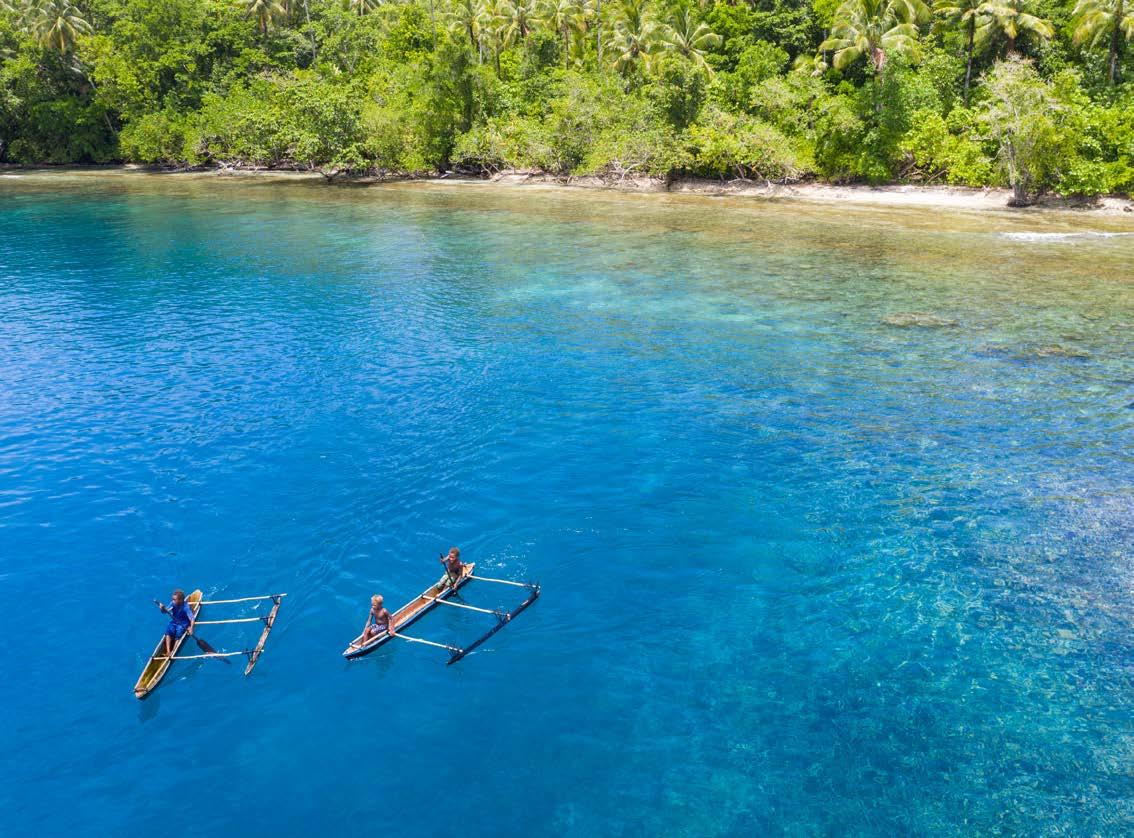

Visitors to Kimbe can stay in quality accommodation at Walindi Plantation Resort, Liamo Reef Resort and Kimbe Bay Hotel. Cheaper options include Mahonia Na Dari which also has a marine environment education program.
Sights & Attractions
• Diving Zero
• Garu Hot River
• Spotting Megapodes
• Mahonia Na Dari
• Bass Fishing
Kimbe Bay
53 DESTINATION PAPUA NEW GUINEA
Road by a palm tree plantation and volcano in Kimbe
BOUGAINVILLE
Today, Bougainville is a peaceful and welcoming island with plenty of interesting attractions on offer. But it wasn’t always like this. Between 1988 to 1996, Bougainville was a place of great hardship when friction between the Panguna Copper Mine and the local Bougainville Revolutionary Army escalated into civil war. Sadly, up to 20,000 lives were lost before peace was established. This wasn’t, however, the island’s first encounter of war.
In 1942, the Japanese used Bougainville as a base to support its operations in the Pacific region. In 1943, Allied Forces attacked aggressively and eventually the Americans took control of the western side of the island. Shortly thereafter, the Japanese Forces infiltrated the mountains and jungles and ultimately fought head to head in a battle known as the Hellzapoppin Ridge Battle. Many war relics can still be found throughout Bougainville, including the plane wreckage of Admiral Yamamoto - regional head of the Japanese Forces in WWII. The latter is an extremely popular destination amongst Japanese visitors who are interested in knowing more about their history.
Rotokas Ecotourism, a local initiative, provides guided treks along the Rotokas-Numa Track where visitors can discover war relics, fascinating cave systems and stunning waterfalls. A breathtaking trek to Mount Balbi, an active volcano, is also highly recommended. If you’re a keen birder, embark on a birdwatching tour to spot the rare moustached Kingfisher, Bougainville crows, the pied goshawk, and much more. In addition, Rotokas Ecotourism can organise village tours where you can experience first hand how the locals live. The islands around Bougainville are also worth checking out. Cruise out to White Island or spend a few days exploring the hospitality of Pok Pok Island or Teop Island.
Keep an ear out for the Reed Festival staged in Arawa twice a year.
KAVIENG - NEW IRELAND
Nestled in a picturesque harbour, Kavieng is located at the northern tip of New Ireland. While the township is small, it’s worthwhile spending a couple of days here to explore its unique attractions.
Near Kavieng Village Resort you’ll discover some good surf breaks. Just head towards the airport, turn left and follow the signs. The road becomes a dirt trail winding its way through a few small villages, however it takes less than ten minutes to arrive. You won’t be disappointed! The shoreline is one of the most beautiful in PNG boasting great waves, and further along a number of surf breaks. If required, a local can show you the best surf spots.
If you’re a history buff, visit the Bagail Cemetery where you’ll find the gravesite of Baron Boluminski. Boluminski was the first German government official to arrive in Kavieng in 1900. He brought peace to the island by policing the region and getting locals involved in building infrastructure. He is responsible for constructing the self-named Boluminski Highway, which is now famous for its 264 kilometre bike tour along the length of the island.
The most renowned land attraction on Kavieng is the feeding of the eels at Laraibina River. The relationship between the locals and the eels is a unique one. In ancient times, the villagers believed that if you killed an eel in the river between the beach and the bridge you would die as a consequence. Although nearby villages used the eels as a food source, the Laraibina locals refrained and for generations the same families of eels would return to the river.
It is believed that the eels live in the river until they are ready to breed and then travel to the deep ocean to bear their young. The mother eel dies, but the children return to the river and grow there until the cycle is repeated. Eel feeding is a truly memorable experience as the eels literally climb into the food bucket to gorge on succulent mackerel. While the eels don’t bite, you should only watch the feeding as their teeth are razor sharp and getting your finger caught could result in a nasty cut.

54
Laraibina River is approximately 70 kilometres from Kavieng on the main road. While it’s possible to navigate your way to this attraction, it’s not well signposted so do ask a local. The village nestled by the river is lovely, with stunning beaches close by (surfers are welcome) and a viewing area for the feeding of the eels. This activity costs K20 per person as well as you’ll need to bring a can of mackerel in natural oil which can be picked up at any trade store for around K5. You can spend a few minutes or an entire day in the village at Laraibina. If you pre-book, you’ll be served finger food all day long for K60 per person.
Traditional shark hunting is a practice also unique to New Ireland, particularly along the west coast near Tembin and Kontu. Locals who possess the ability to “call up sharks” lure the creatures to the boat before ensnaring them. To experience shark calling, enquire at the Tourist Office or Kavieng Hotel for a local who can guide you to this attraction.
Sights & Attractions
• Kavieng Market

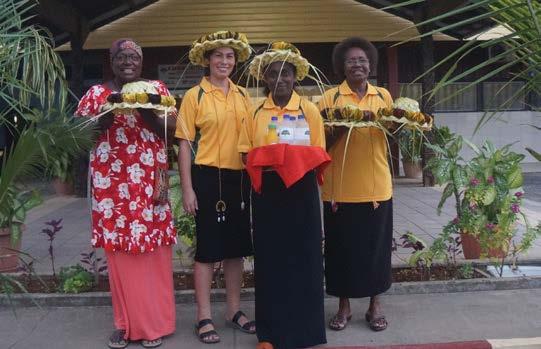



• Feeding of the Eels
• Lissenung Island Resort
• Diving Echuca Patch
• The Boluminski Bicycle Tour



• Remote Surfing
•
55 DESTINATION PAPUA NEW GUINEA
• 40 REFURBISHED SELF CONTAINED ROOMS
• FRIDAY NIGHT SEAFOOD BUFFET
• CONFERENCE FACILITES
• HIRE CARS
KAVIENG
FREE AIRPORT TRANSPORT
HOTEL
P: 9842 199 / 70314784 E:kavienghotel@daltron.com.pg
LISSENUNG ISLAND
LIssenung is a tiny island just a 20-minute boat ride from Kavieng. To visit this tropical paradise, you need to have made prior arrangements or be a guest of the resort. The boat leaves from the small wharf at Fisheries and will transport you across pristine waters which are teeming with exotic marine life.
Like Kavieng, Lissenung is famous throughout the world for its diving. For an easy day, just snorkel the house reef around the island which is home to almost 400 different fish species and exotic coral. For an exciting dive adventure, be sure to check out the famous Albatross Passage among many other incredible dives. Surrounding Lissenung are some islands renowned for their amazing surf, including Nu Salamon, Erup and the well-known Ral.
Lissenung is dedicated to turtle conservation and visitors are often treated to a day out to hunt for the eggs before the locals eat them. The 60 day hatching process requires a delicate hand and some clever planning. Warmer nests are believed to hatch female turtles while cooler nests hatch males. As a result, nests are placed in a variety of different places to ensure that variety is achieved.
While turtle conservation is highly regarded in the region, very little is known about marine turtles. It’s often said that turtles only lay eggs on a full moon, but scientists are yet to confirm a cycle. What we do know is that turtles arrive on the beach in the evening, crawl up the beach, prepare the nest, lay eggs and return to the beach. The young have a long road ahead to survive and go to a great deal of effort as they dig their way out of the nest (all the hatchlings dig together in one formation to ensure that the majority make it out). These cute marine creatures then make their way to the water amid seagulls and other predators. It is estimated that only one in every thousand turtles lives to adulthood. When the adults are fully grown, they return to the same spot to lay their eggs and the legacy continues.
NUSA ISLAND
Nusa Island is probably the most well-known accommodation venue in Kavieng, located just a two minute boat ride from town. Day visitors are welcome for a small fee, but you will need to contact Nusa Island Retreat to organise a pick up.
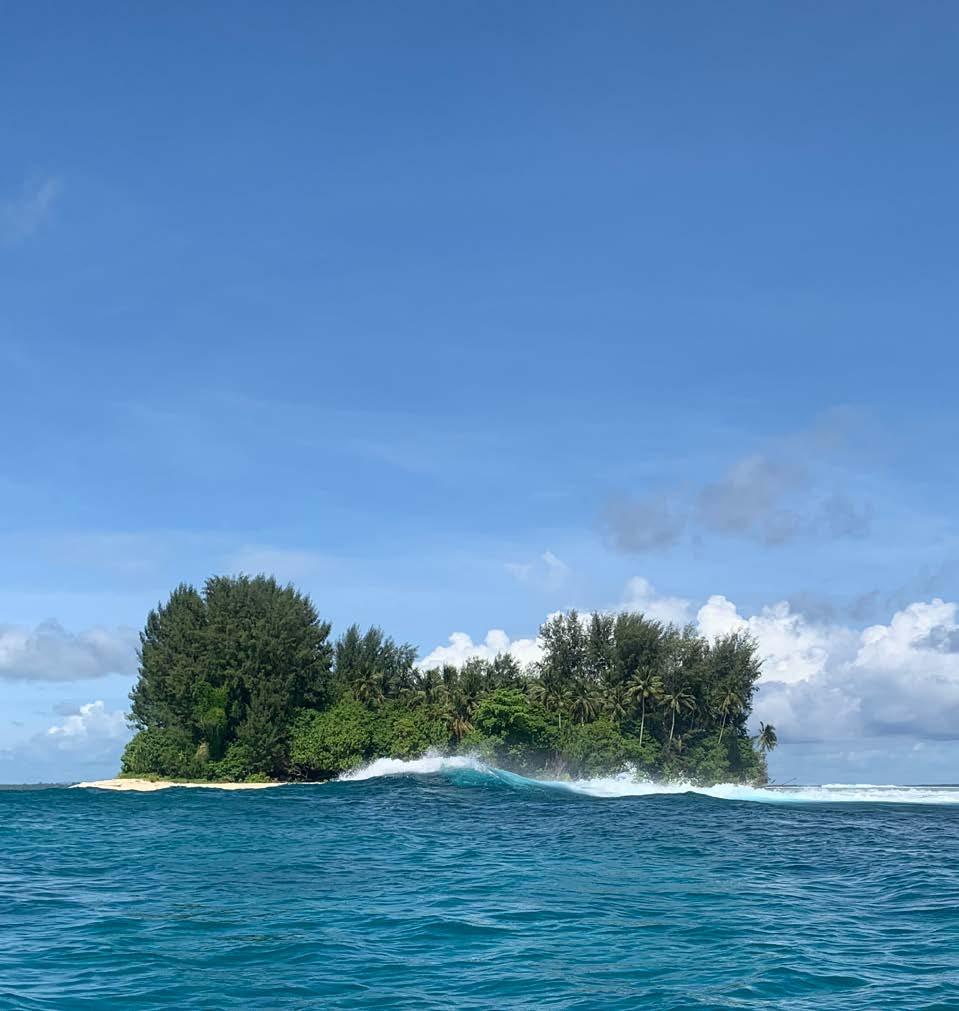
Nusa is a great place to explore and relax. Snorkelling, canoeing and walking are all part of the rejuvenating experience with a pace that enables visitors to completely unwind. There is a small local market on the other side of the island where visitors can purchase local carvings and shell money. Shell money is a traditional currency used by many Papua New Guineans before the introduction of the Kina. Shells are broken up and then threaded along a string in which its value is decided by its length. It’s believed a certain artful skill is required to make shell money. The Tolai people in East New Britain still use shell money (the Tabu) for purchasing goods and as an exchange in ceremonies such as weddings.
Another must do while visiting Nusa is the walk across the island to Big Nusa. The island that the resort resides on is called ‘Nusa Lik’ which means ‘Little Nusa’ - an abbreviation of the Pidgin word Lik Lik.
Accommodation on Nusa is fairly unique and consists of a number of private huts which are raised off the ground. The balconies offer comfortable hammocks which are perfect for soaking up the sounds and sights on a warm evening while enjoying a chilled beverage.
Sights & Attractions
• Snorkelling

• Canoeing
• Walking to Big Nusa
• The Local Market
• Traditional Carvings
• Shell Money
56
MANUS ISLAND
Manus Island boasts heavily timbered hills, striking waterfalls and is home to the stunning Emerald Green Snail.
For a unique outing, ask a local guide to take you to Tewii Lagoon which was home to the legendary mermaids, Henimei and Henipong. The lagoon is located inside a cave where the water is an unusual copper green colour and crystal clear. This is a sacred place for the locals so make sure you ask your guide before swimming in the waters. Wearing conservative swimming apparel is also expected. And beware, the water is cold!
If surfing in remote areas is your style, then there are few places quite like Manus. Sit back in this tropical oasis while the island serves up some excellent conditions for surfing. When the surf flattens out, take the opportunity to explore the exotic marine life with a little snorkelling or diving.

Fishing is abundant in the region, with mangrove bass, milk fish, mullet, mackerel, parrot fish and other varieties available here. Go fly fishing or try your hand at some deep sea fishing.
The waters also provide the perfect conditions for sea kayaking due to the tranquil conditions and a number of islands in close proximity. Kayaking around the area at a relaxing pace, you can marvel at the unusual birdlife, beautiful fish and coral reefs, war relics and idyllic, hidden beaches. Just remember that if you stop at a random beach for any length of time to ask one of the locals about seeking permission from a village elder. Papua New Guineans will always be welcoming and hospitable, but it’s important to understand that there are some local courtesies that apply. Offer K10 to K20 or an article of clothing as payment to access beaches.
In the area close to the airport, there are three local villages called Papitalai, Naringel and Ruirui. From here you can do trekking, swimming, bike riding, birdwatching and more. For a cultural experience, check out the Garamut Dancing which is a traditional dance performed by the locals.
DESTINATION PAPUA NEW GUINEA 57
THE D’ENTRECASTEAUX ISLANDS
The D’Entrecasteaux Islands extend 160 kilometres across and includes Fergusson, Goodenough and Normanby Islands. Fergusson Island is a fascinating place to explore. One can relax at the famous Dei Dei Hot Springs or take a therapeutic mud bath. If you’re seeking something more upbeat, you can embark on a one and a half hour hike from Warluma to Mt Lamanai which offers exhilarating panoramas. Tawali Resort can organise transport to Fergusson Island, which is a three hour boat ride. Alternatively, you can contact one of the local villagers to assist you. Just make sure you clarify the financial details of this arrangement before departing.
On Normanby Island, which is an hour from Tawali in a dinghy, there is a dive site sitting five minutes off shore with plenty of wrecks to explore. The reef sharks and colourful marine life here make for a thrilling dive. Goodenough Island, which is about four hours by dinghy from Tawali, was named by Captain John Moresby after a naval colleague, James Graham Goodenough. The island boasts interesting rock paintings and around the coast the snorkelling is spectacular because of the abundant marine life here. If you want to stay on Goodenough Island, camping is available. First check with the villagers and as a courtesy you should pay a fee (K50 is recommended) for their hospitality. Large groups need to organise camping in advance, as in all places in PNG. It’s always best to contract a local guide to go with you who speaks the local language.
THE TROBRIAND ISLANDS
The Trobriand Islands, otherwise known as the Islands of Love, are made up of four central islands – Kiriwina Island, Vakuta, Kaileuna and Kitava. The social paradigm here is still dependent on traditional chiefs who govern the villages, though the hereditary lines are passed down via the female bloodline. Likewise, women can choose to have an array of lovers and villages are said to have huts devoted to their amorous activities. During the Milamala Festival, between June and August, the locals celebrate harvesting the yam, which takes ten months to ripen. At this time, traditions of the past are observed with rituals showing gratitude for a fortuitous season. On Kiriwina, the largest island here, accommodation is available and PNG Air travels regularly to the region. Just ask a local where the best places are to explore caves, swim and snorkel around the islands.

58
Kiriwina Island, Trobriand Islands
customs & artefacts
Papua New Guinea is rich in fascinating artefacts and traditional customs. Take the time to familiarise yourself with the local culture.

CULTURAL ARTEFACTS
Papua New Guinean art forms are as diverse as they are distinctive. Their intricate designs and unique shapes continue to intrigue people the world over. Most Papua New Guinean art has a spiritual and ceremonial meaning, which plays an important role in the lives of villagers.
Honouring tribal ancestors is a major theme in Melanesian life and so it comes as no surprise that the spirits of ancestors are immortalised in artefacts such as masks and sculptures. Artefacts are used in ceremony and rituals to honour both the living and the dead as well they have many practical applications. The indigenous flora and fauna in PNG provide both a source of inspiration and materials for artefacts.
Although artefacts today are produced almost exclusively for resale, they are authentic replicas of traditional spirit figures, ancestral masks and weapons, often incorporating symbolic designs and motifs. You can be sure that every artefact you buy in the region is an original, from the beautifully woven and patterned wicker trays heralding from the Highlands to the brightly coloured carry bag called the ‘bilum’, which makes an evocative keepsake of PNG.
TRADITIONAL CUSTOMS
When you are trekking in PNG it is important to understand you are walking through someone’s backyard – everything is either communally owned or owned by a family or tribe. Certain cultural taboos must be observed. Historically an article of clothing, a bag of rice, even pens, paper or batteries would be expected in exchange for a meal or accommodation in a village. Today, however, payment is often required in the form of actual money. Always ask your local guide if you are uncertain. Local guides also have the knowledge to help create a truly rewarding cultural experience. Ask as many questions as you can about the local culture, history, flora and fauna. Villagers are friendly and welcoming, but they are fairly conservative so always wear long shorts (knee length) or pants/skirts and t-shirts. Swimming costumes can be too revealing so it is recommended that men wear shorts and women either shorts and a t-shirt or a sarong. Since you’re a bit of an oddity, you will be followed by curious children and stared at by everyone anytime you are out in a village, but don’t be intimidated – it’s not rude to stare in PNG. Break the ice with a smile and a cheerful “apinun” which can help get some interesting conversations started with the locals. Although most villages have a few English speakers, learning some basic Tok Pisin makes for an easier and more interactive visit to rural areas.
59 DESTINATION PAPUA NEW GUINEA
ACTIVE adventures
SURFING
PNG offers consistent surfing conditions without the overcrowding guaranteed under the Surf Management Plan (SMP) administered by the Surfing Association Papua New Guinea Inc (SAPNG), in partnership with the surf camp operators and traditional resource custodians.

On the southern side of PNG, fifteen minutes out of Port Moresby, you’ll find Sero Cove situated on the western side of Pyramid Point. This is home to the Pyramid Board Riders Club, an affiliated member of the SAPNG catering for the local and expat surfers based in Port Moresby. The main barrier reef stretches along the southern seaboard all the way to the Milne Bay Province. From May to November, during the south east season, the waves range from three to six feet with the best waves occurring early in the morning. The same area is condusive for kite surfers and wind surfers.
The northern side of PNG boasts some premier surfing locations with waves on the mainland and offshore islands generated by the monsoon swells from mid-October through to late April. Consistent quality waves ranging from three to eight feet, and occasionally stretching to ten feet, can be found at Vanimo, Madang, Wewak and New Ireland Province. The most consistent waves are in Vanimo, Madang and Kavieng, which vary from beach breaks to point and island reef breaks. Surf camps are set up at Vanimo, Madang and Kavieng, and accommodation and transport are readily available. There is also a SAPNG registered Surf Charter boat based out of Kavieng called the PNG Surfaris.
New Ireland Province is one of the most popular destinations for surfers visiting PNG. Around Kavieng there are numerous reef setups, which provide several good and varying surf breaks. Just off Kavieng sits Nusa Island Retreat, an environmentally low-impact facility that provides accommodation, meals and boat transport to the surrounding islands and their breaks. There is also Rubio Retreat surf camp down the east coast of New Ireland Province similar to Nusa Island Retreat. The waves in this region and around Nusa Island Retreat and Rubio Retreat are well established and known in international surfing circles. Nusa Island Retreat limits the number of surfers staying at any one time consistent with the SAPNG Surf Management Plans and is often fully booked during the surf season. The same SMP protocols are applied with the Vanimo Surf Lodge in Vanimo and the Tupira Surf Club in north coast Madang. These are registered surf camps of the SAPNG that adhere to the SMP rules and regulations of surf tourism in PNG.
SAPNG is currently working in partnership with the traditional resource custodians based on the precedent SMP model to open up new surf camps and surf clubs in Manus and Bougainville. SAPNG offers surfers integrated tour packages through its Surf Management Plans, developed in conjunction with traditional resource reef custodians. If you require further information on surfing in the PNG region, please visit www.sapng.com or email SAPNG President and co-founder Andrew Abel on sapng06@yahoo.com.au.
60
CAVES
PNG possesses several of the deepest cave systems in the world which give rise to incredible underground caverns and stunning formations. The caves located within the Nakanaï Mountains on East New Britain are said to be some of the most exhilarating worldwide. The caves feature amazing stalagmite formations and enthralling caverns and passages. These caves are generally only suitable for accomplished cavers because of the difficult terrain they pose. Muruk Cave on East New Britain, which measures 1,123 metres in depth, is one of the most popular caves to explore in the world.
Benua Cave is an accessible caving adventure for the general tourist. Nestled within the Keriaka Plateau on Bougainville, the cave is said to have the world’s largest cavern estimated at around 4.5 million cubic metres.
The cave is home to an eighteen metre high stalagmite, which is remarkable to see firsthand. Bougainville has a range of other caves to explore including those found on Buka Island. For more information on tours, contact Bougainville Tours PNG on +675 7365 6050.

In the Simbu Province, the caves found around Kundiawa were previously used by locals to bury their dead. Ask around for a local guide who will know which caves are open to tourists and escort you there.

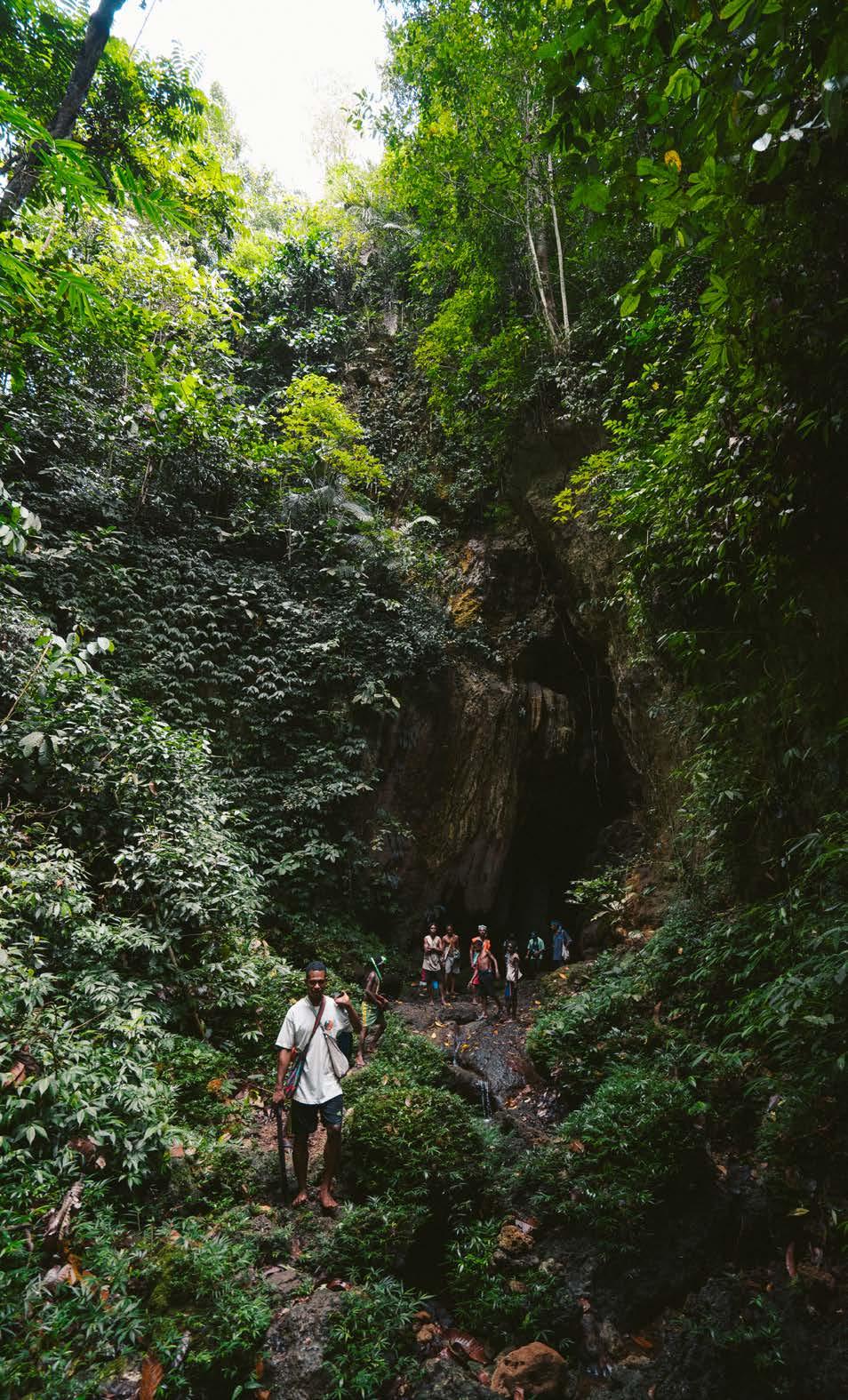
For a cave adventure like no other, don’t miss seeing the skull caves in Milne Bay. While this attraction sounds a little unusual, it has a fascinating history. It’s believed that the locals once found shelter in the caves and used them as a place to hide from their enemies. At night time, however, they would leave the secure environs to hunt down their enemies, return with their bodies and cook them over an open fire. This strategy provided an easy source of food while eliminating a threat. While the bones of the bodies were disposed of, the skulls comprising of men, women and children were retained as trophies. The more skulls collected, the more revered and foreboding the tribe became.
When the missionaries arrived in the 1890s, they deterred the locals from practicing cannibalism by demonstrating how they could use fish, pigs, fruit and vegetables as an alternative food source. They also showed the locals how to build houses which eventually led to the prevalence of villages and a different way of life. Speculation remains as to whether the skulls were the result of a cannibalistic tribe or, in fact, a sacred burial place. The locals were also taught to bury their deceased upright in graves placing the head in a claypot. As the body decomposed, it would separate from the head which would remain in the claypot. The head was then hung in the kitchen as a commemoration of the deceased. When cameras were developed, the missionaries convinced the locals to take the skulls to a graveyard for burial because the deceased could be immortalised in a printed image. The most popular skull cave lies in proximity to Tawali Resort. Be sure to take a local guide with you to help navigate the way.
61 DESTINATION PAPUA NEW GUINEA
Auma Cave on Kitava Island
Madang, Credit: Jackson Groves, #journeyera
Premier Hospitality Supplies in PNG

Renowned
Postal: PO Box 3058 Boroko NCD Papua New Guinea
Location: Section 33 Lot: 3 Lawes Road Konedobu
T: +675 321 8588 E: info@jbg.com.pg
www.jbg.com.pg


FISHING
From the rivers to the oceans, PNG offers the ultimate fishing experience. The coastal waters provide abundant bluewater and big game fishing such as marlin, sailfish, yellow fin tuna, giant trevally and dogtooth tuna. Meanwhile, the black bass, reputed to be one of the world’s toughest fighting fish, can be found in the Fly, Sepik and Lower Ramu Rivers. If barramundi’s your game, try the remote Bensbach Lodge in the Western Province near the border of Irian Jaya. The lodge is a fisherman’s paradise as the Bensbach River here is teeming with barramundi as well as tarpon and saratoga. With sustainability at its core, the lodge has a ‘catch and release’ policy so that all fish other than what is sufficient for dinner are let go. Aside from fishing, Bensbach Lodge is a tranquil getaway set amongst beautiful natural surrounds and can be enjoyed by nature lovers, alike. For more information on Bensbach Lodge, call Trans Niugini Tours on +675 7198 9397.

For ocean fishing, Baia Fishing Lodge located on West New Britain is a well-known sport fishing lodge that accommodates serious fishermen. Bass fishing here is particularly good if you are a keen angler. The water channels near Kandrian, also on West New Britain, offer the opportunity to catch the Papuan black and spot tail bass as well as oxeye herring.
For more information on Baia Fishing Lodge, email baiafishingpng@gmail.com. In the south, Tufi offers up great bottom, game and estuarine fishing. Throughout the reefs, Spanish mackerel, barracuda, wahoo and yellowfin tuna are found in generous proportions. In the estuaries upstream, you can try your hand at mangrove jack. For more information on fishing charters in Tufi, call Tufi Dive Resort on +675 323 3462.
62
hotel, medical & PPE products found in establishment rooms worldwide.










63 reservations@shadyrest.com.pg www.shadyrest.com.pg (675) 323 0000 (675) 7323 0000 Taurama Road P.O. Box 5367 Boroko, NCD • Free Wifi Available • Gaming Lounge • Tapas Bar • The Cellar Restaurant • Bakeology Bakery & Cafe • Glow Hair Boutique & Spa • 24 Hour Reception • 24 Hour Security • Free Airport Transfer • ATM & Phone Cards Sold A great place to stay in Paradise! www.shadyrest.com.pg Booking.com



64





























 Port Moresby
Port Moresby



















 by Jackson Groves
by Jackson Groves












 7.
7.










 Traditional papuan meal preparation
Fresh, raw and organic coffee beans
Traditional papuan meal preparation
Fresh, raw and organic coffee beans







































































































